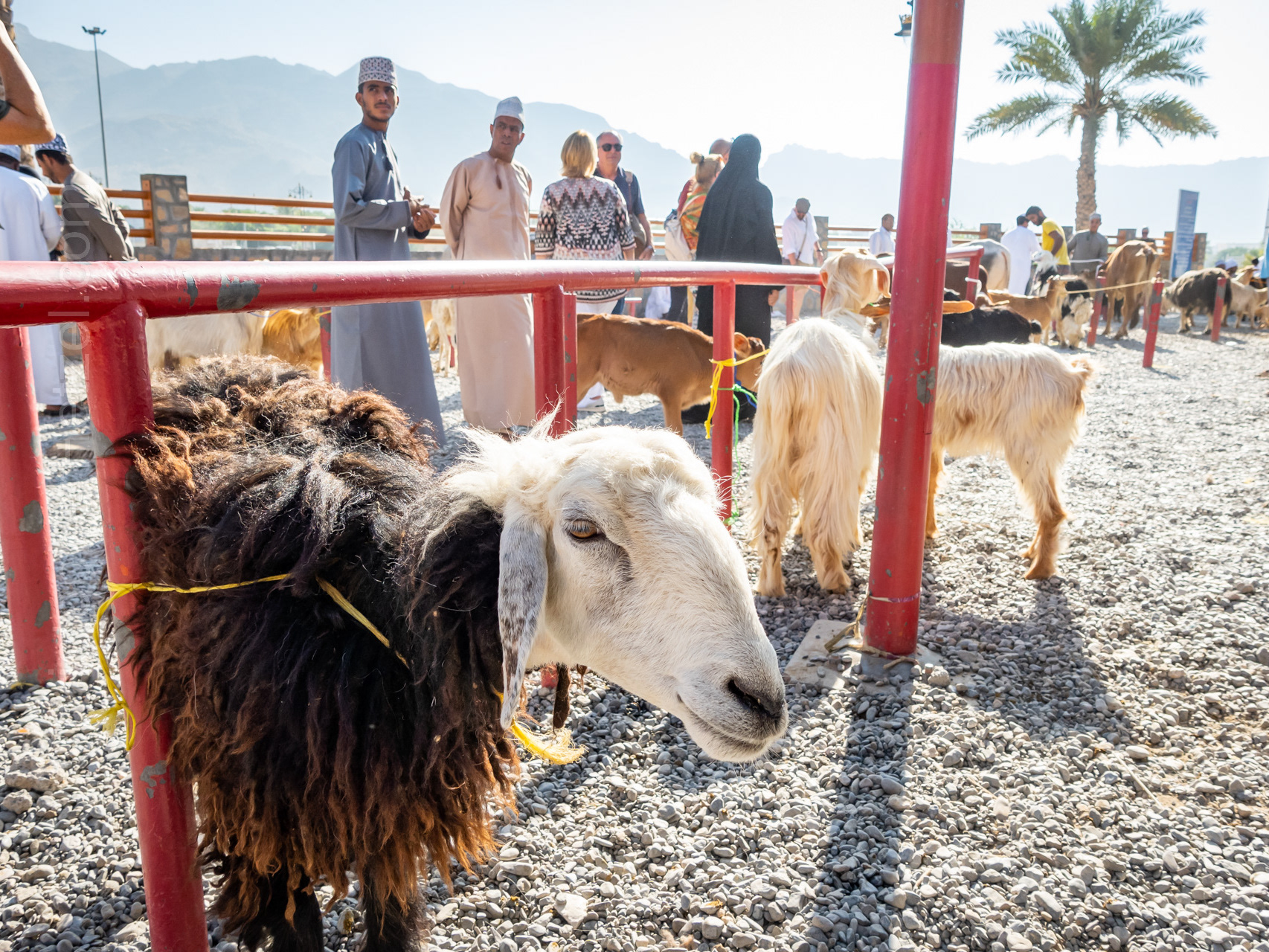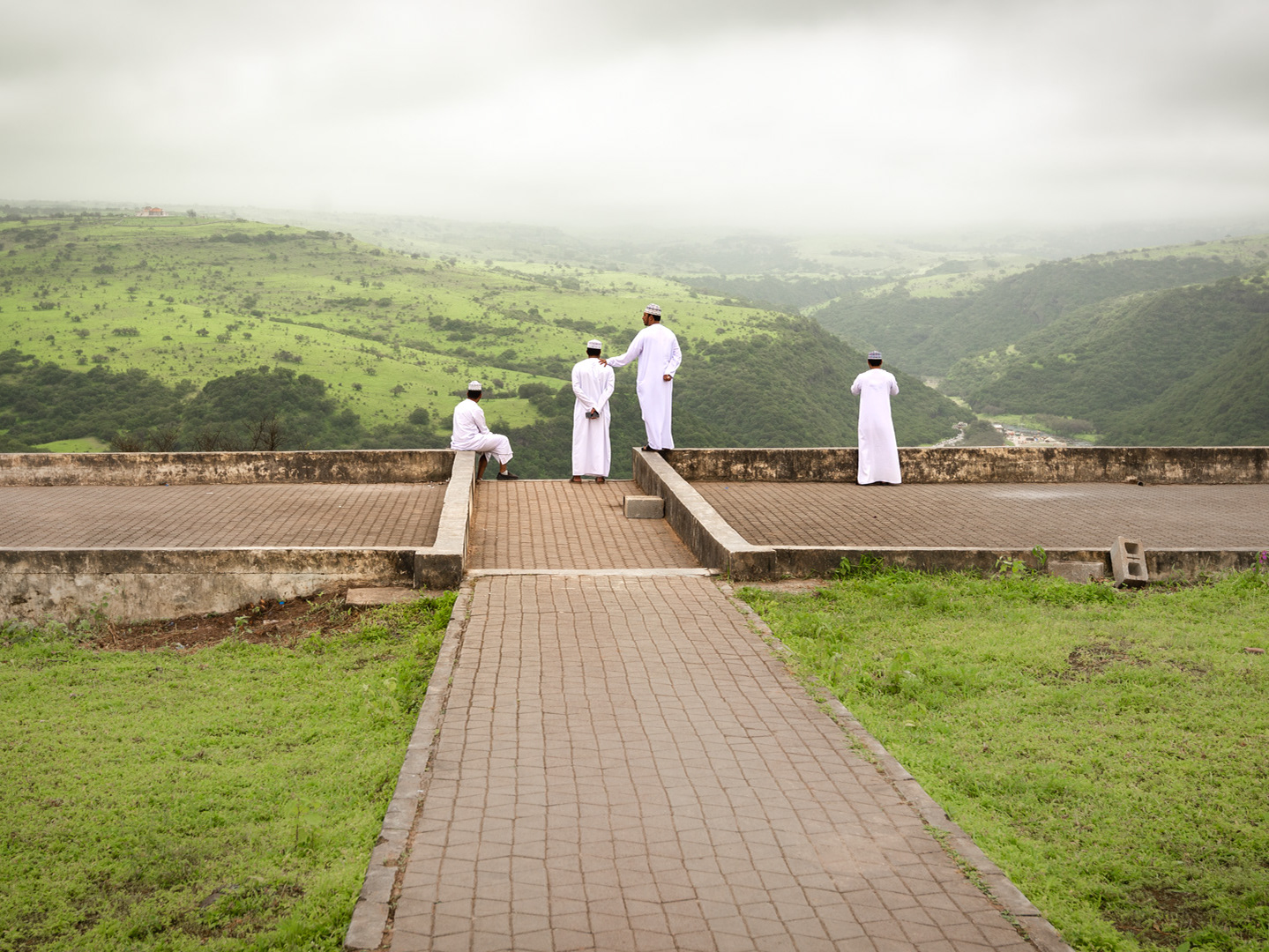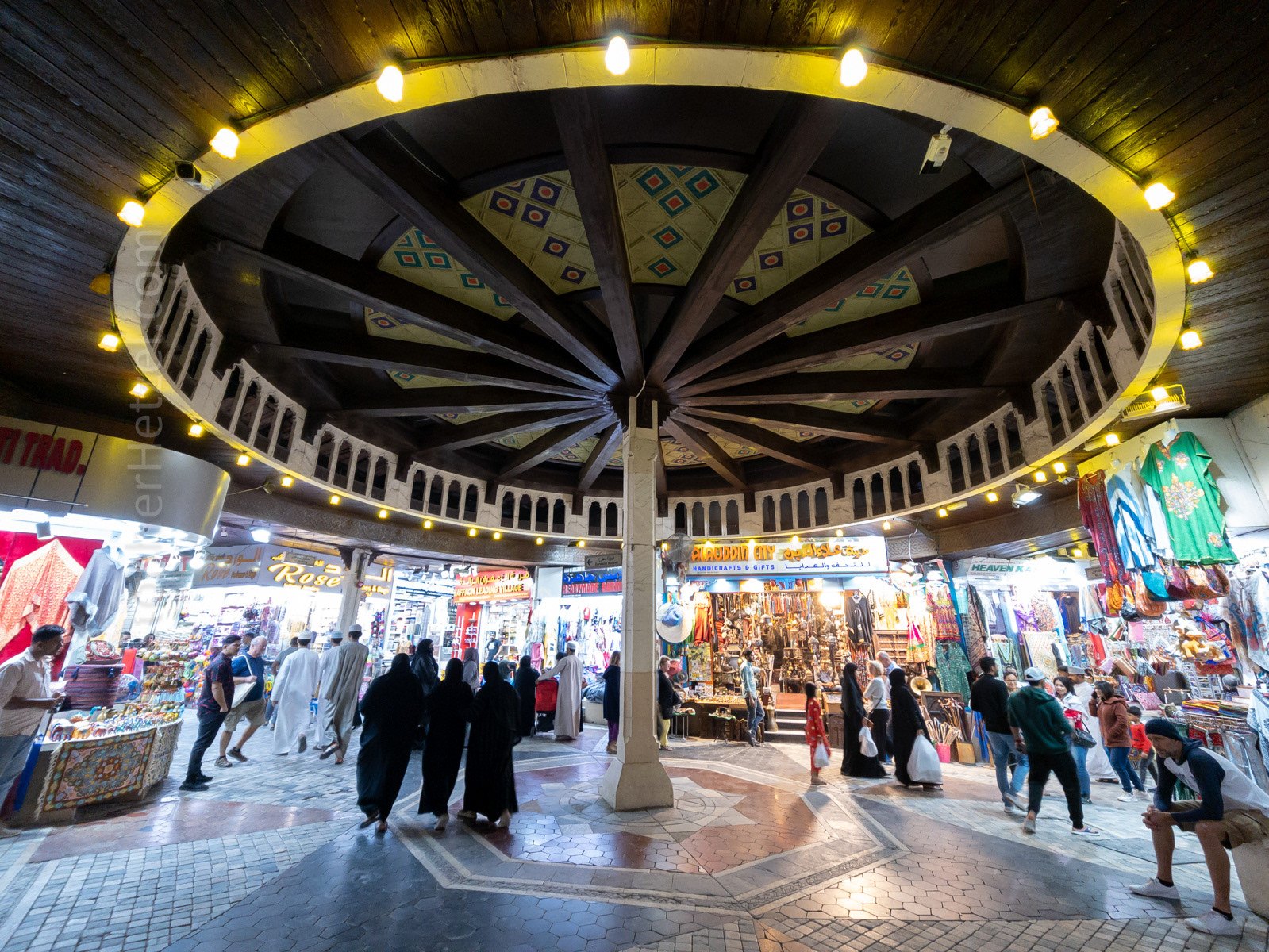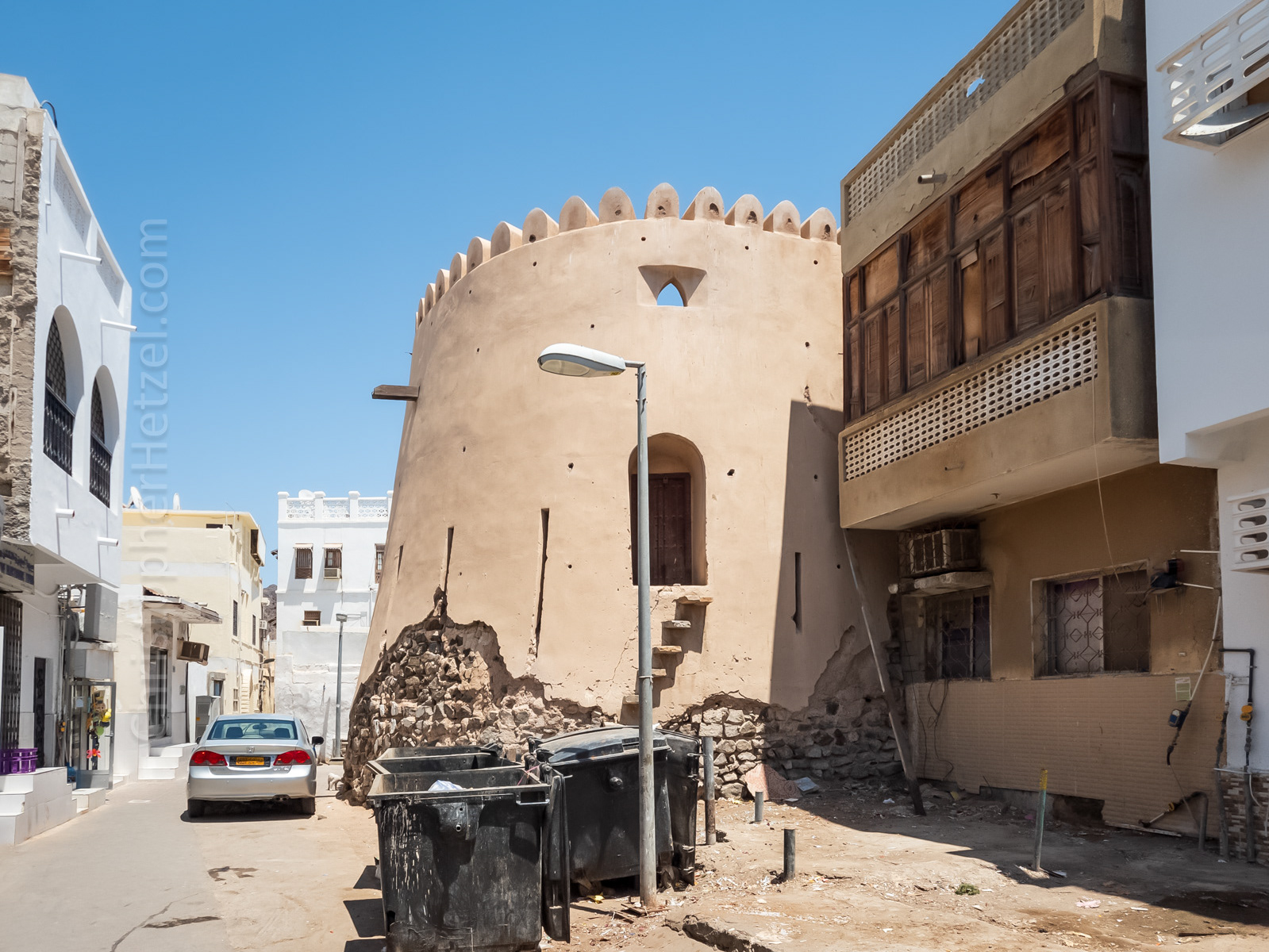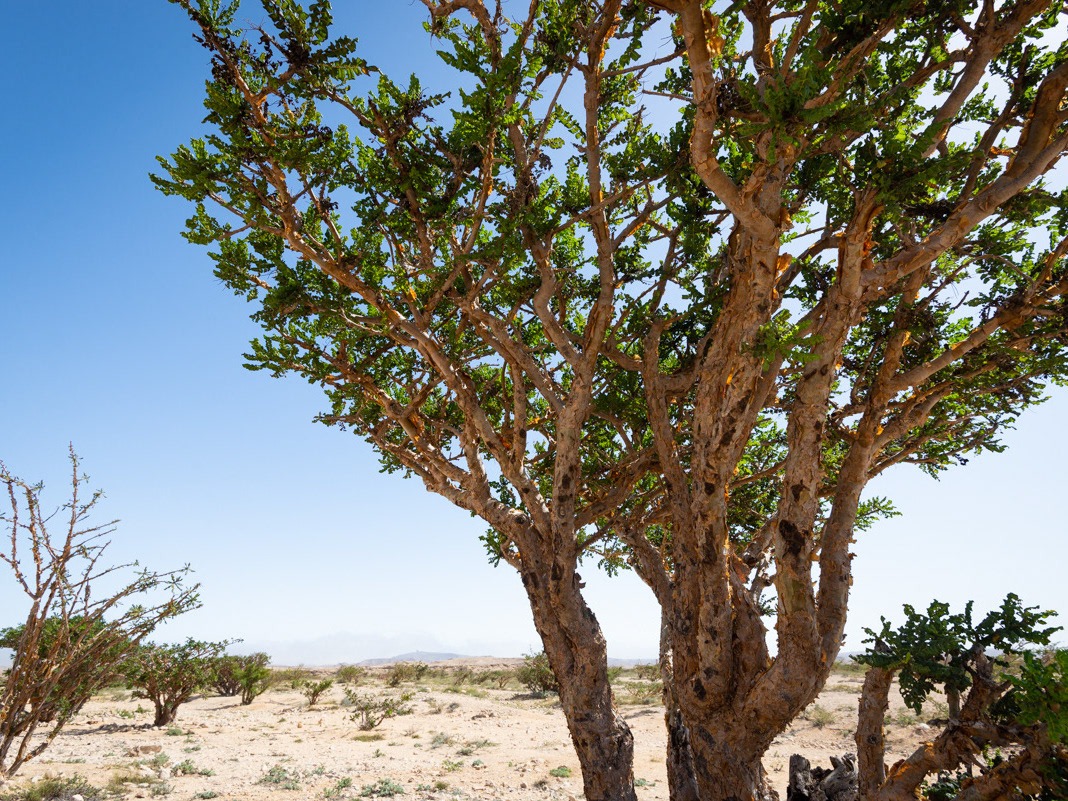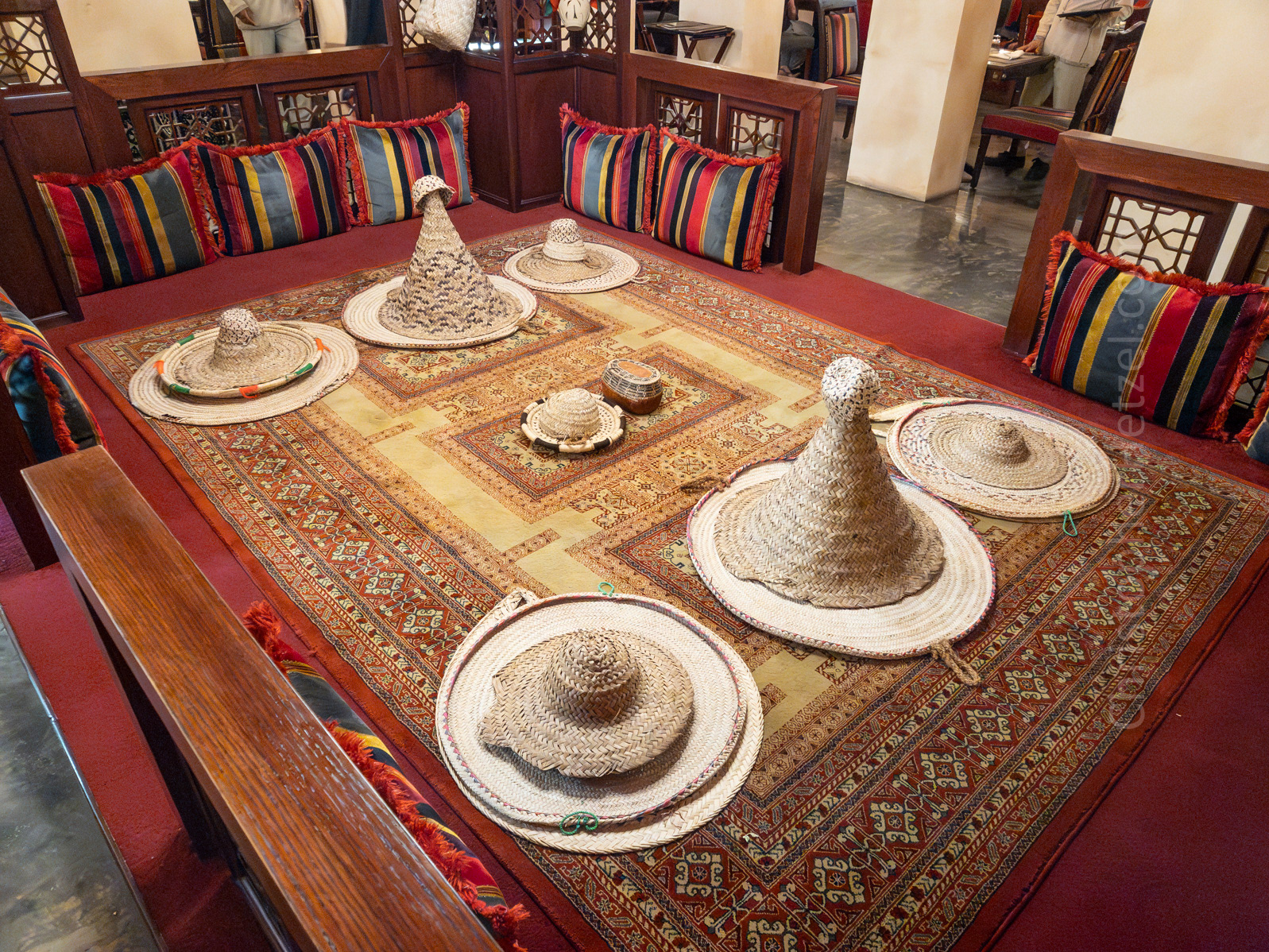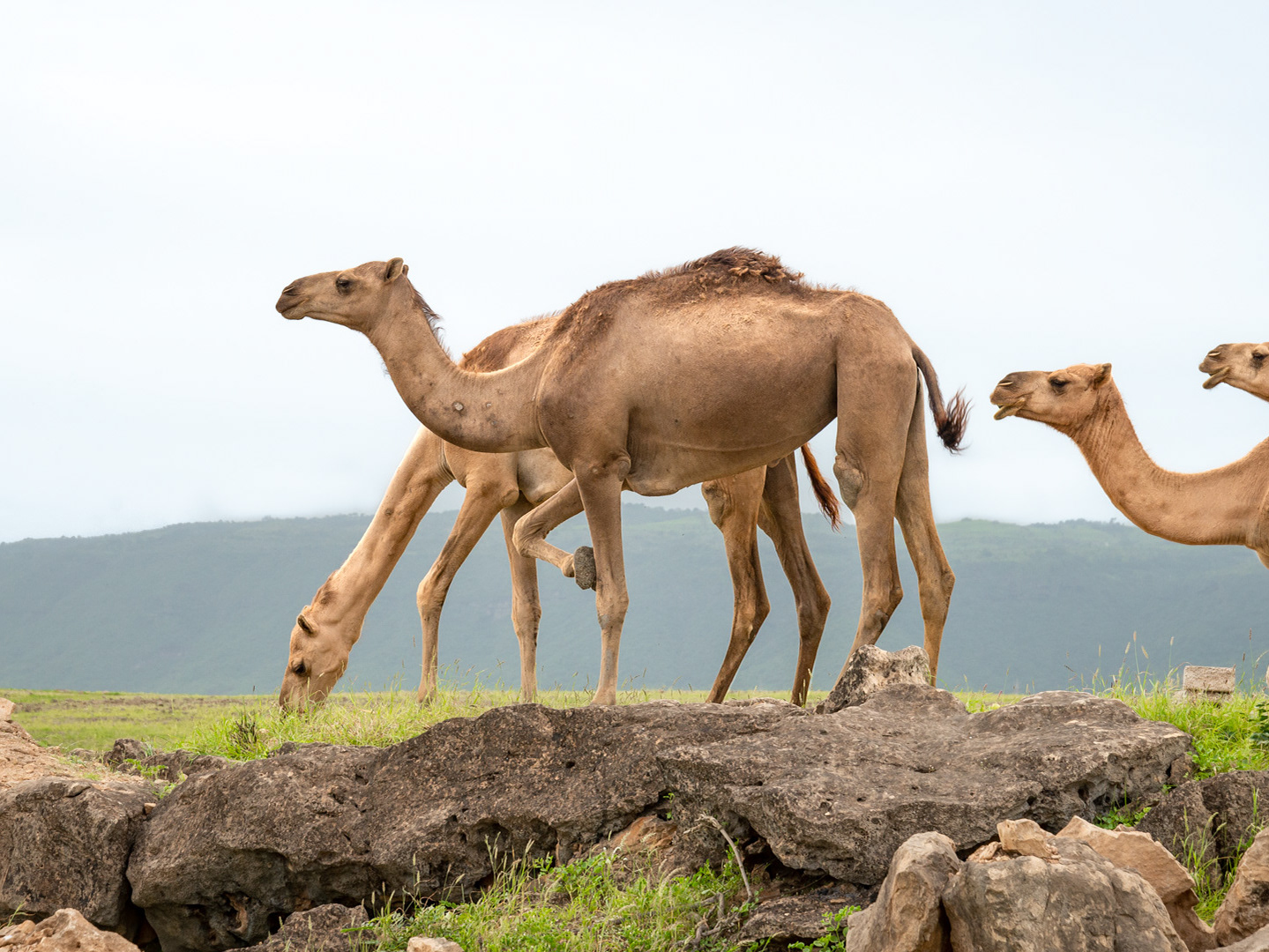The archaeological site of Al-Ayn (ٱلْعَيْن) is one of three 5,000 year old burial sites in Oman, dating to the Bronze Age. These sites consist of hundreds of stone "beehive tombs," stone towers, and stone burial cairns, associated with ancient settlements built around natural springs and palm grove oases. All three sites are inscribed as an UNESCO World Heritage site. And together they form the most complete collection of settlements and necropolises from the 3rd millennium BCE in the world.
The core archaeological site is a vast area encompassing the modern village of Bat, near the city of Ibri, in northwestern Oman. The monumental tower at al-Khutm and the necropolis of Qubur Juhhal Al-Ayn are extensions of this central location, which contains seven monumental towers and well over 100 graves and stone structures in an expansive area. Beyond the necropoleis, the sites include towers, irrigation systems, and quarries where the stone for the tombs was obtained. In antiquity, Bat was a principal center of intense copper mining and diorite stone extraction in what was then known as the land of Magan, and part of an extensive trade network that exported these materials overseas to other ancient civilizations, such as Sumeria in Mesopotamia (now in southern Iraq) and possibly east to the Indus Valley (now in Pakistan).
Al-Ayn is probably the best known of the three archaeological sites because of its remarkable state of preservation and picturesque character. Located 22 km east/southeast of Bat, the site contains over 30 tombs (not all intact), aligned on a rocky crest overlooking a wide wadi
(dry river bed) and date palm oasis of an old, still inhabited settlement. Most of the tombs at Al-Ayn are small, single-chambered, round tombs with dry masonry walls dating to the beginning of the 3rd millennium BCE. While others are more elaborate, bigger, multi-chambered tombs from the second half of the 3rd millennium BCE. Set within a beautiful mountain landscape, Al-Ayn is seemingly the most often photographed of the three archaeological sites and its intact beehive tombs are an iconic image of Oman's history.
For me, visiting the tombs sites was a "must do" activity. I was joined in this adventure by our friend Felix, who accompanied me on an overnight trip to visit several historic locations in the area, including Al-Ayn and Bat. Getting to Al-Ayn involved a three-hour drive from Muscat, soliciting directions from a local farmer (we could see the tombs from afar, but no obvious roads/tracks to get closer), a rocky drive along a narrow farm road and through the washed-out wadi, and, once there, a relatively short hike to the ridgeline. It took a bit of doing, but was simple once we figured it out. The effort was definitely well worth it!
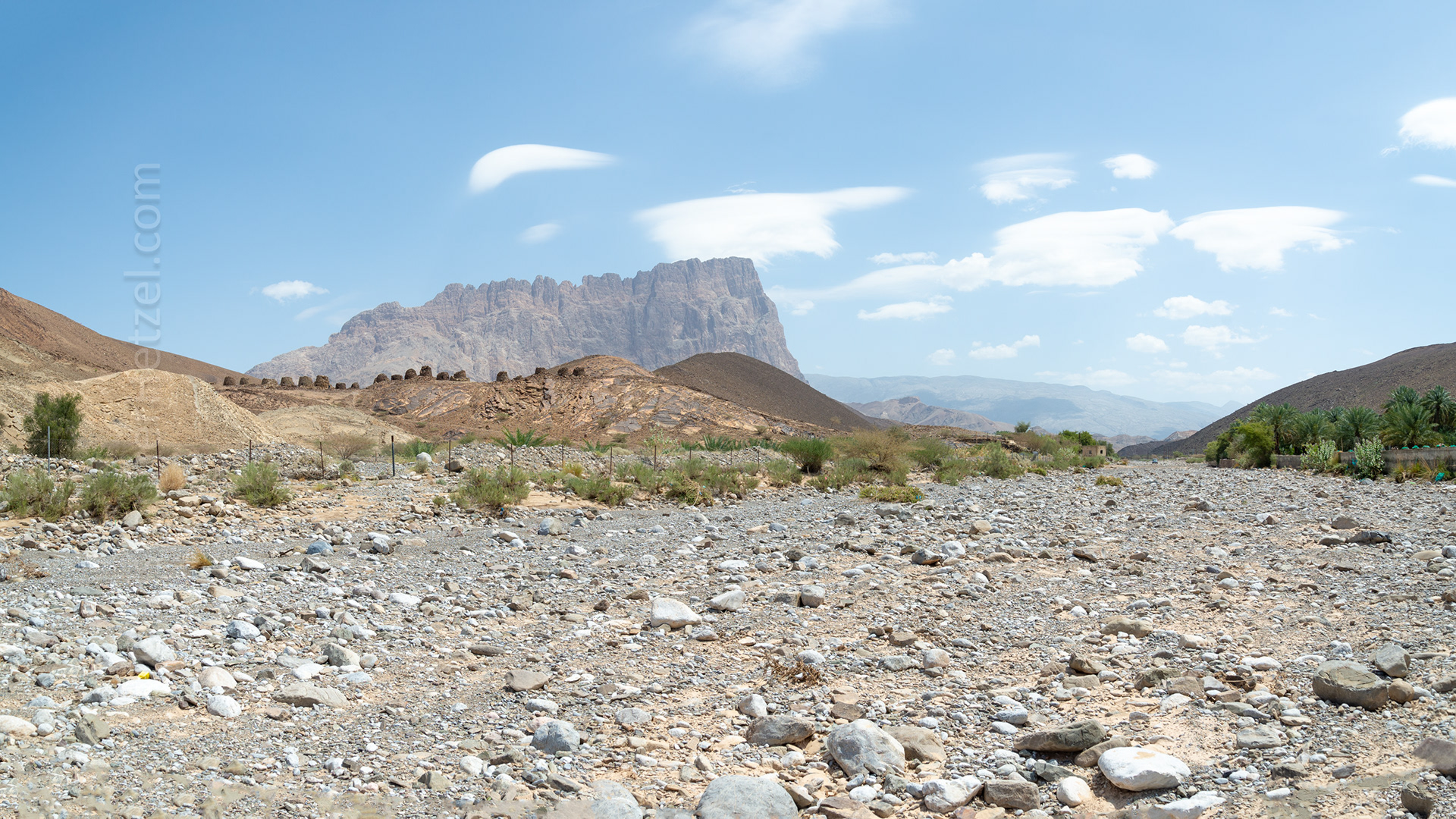
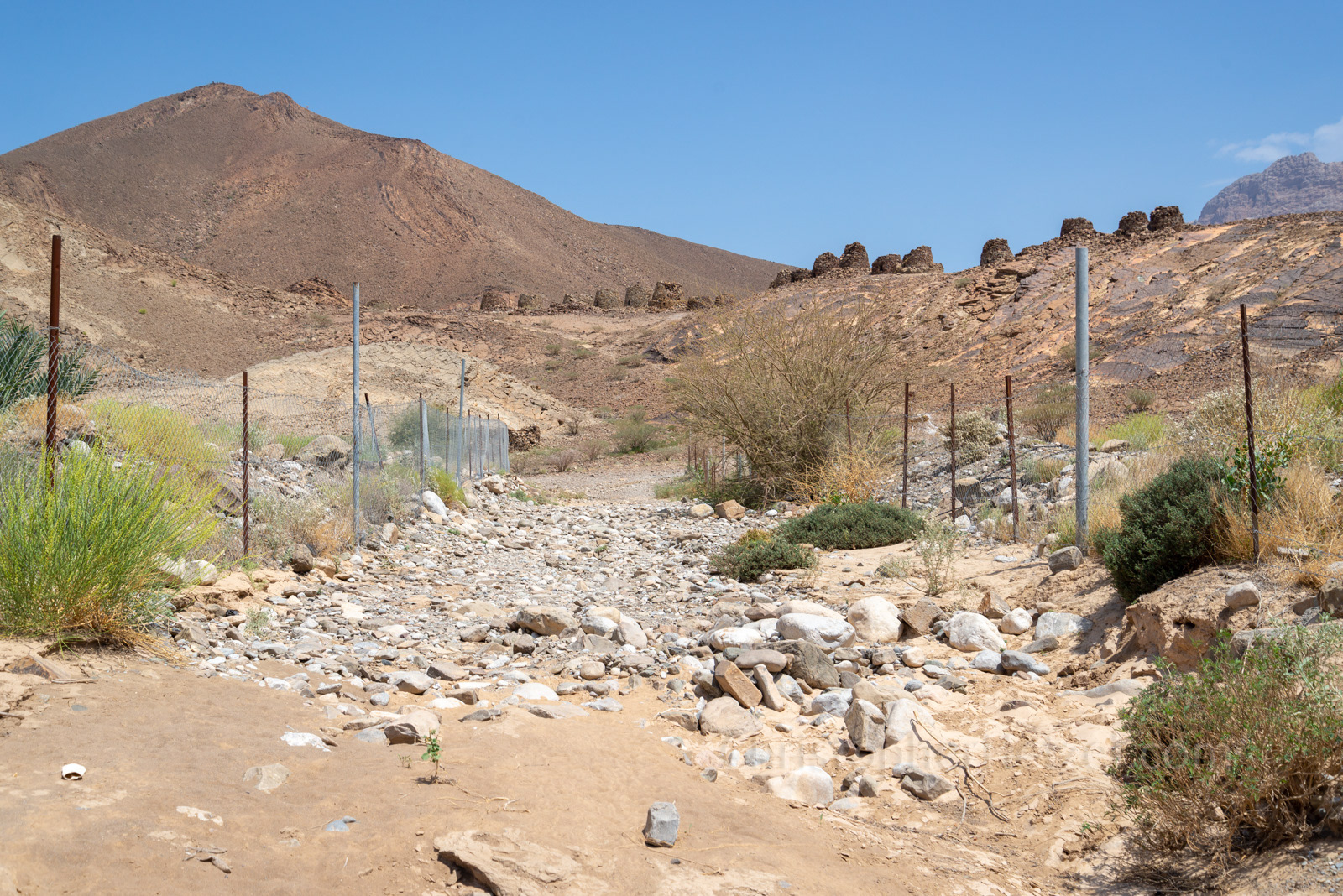
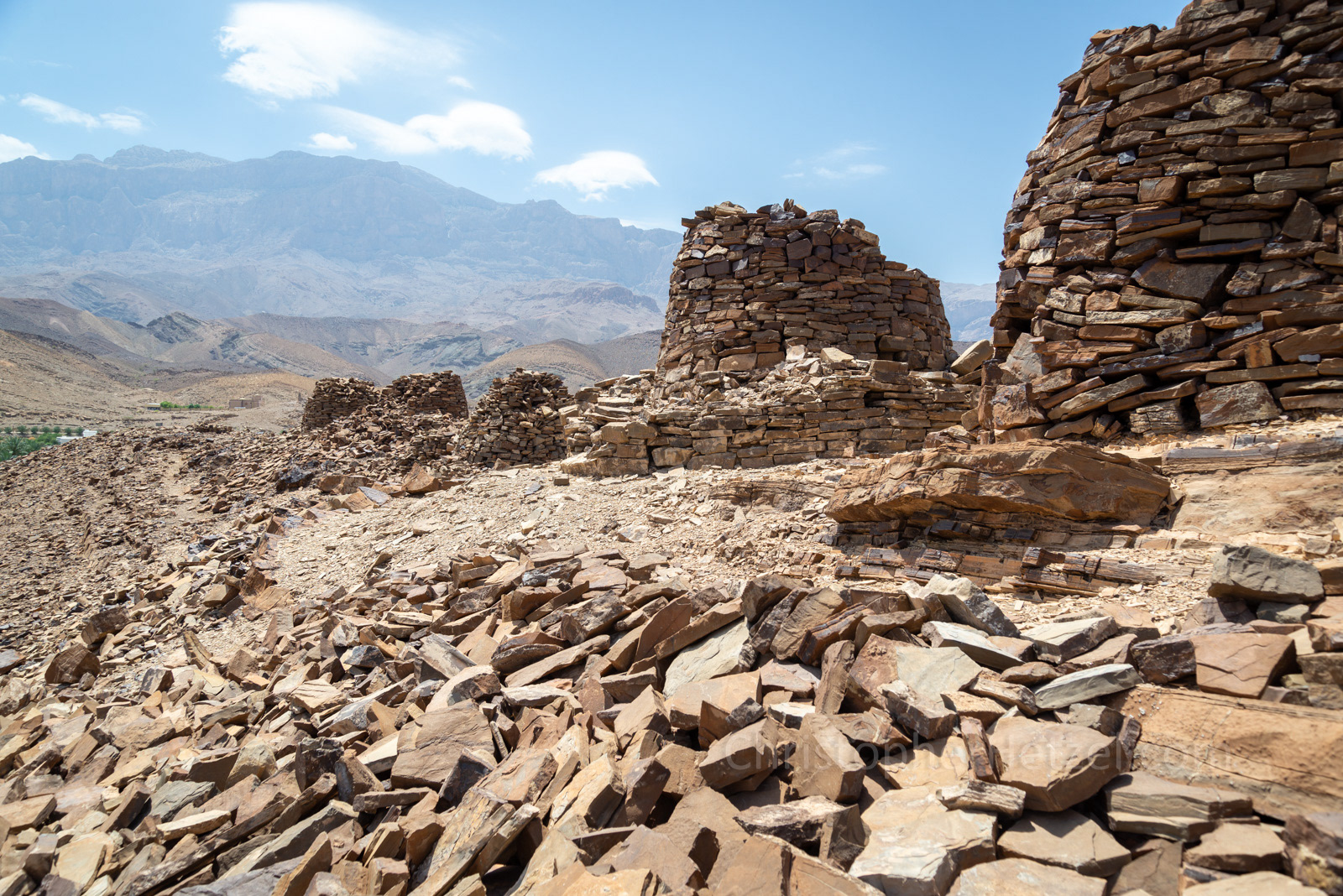
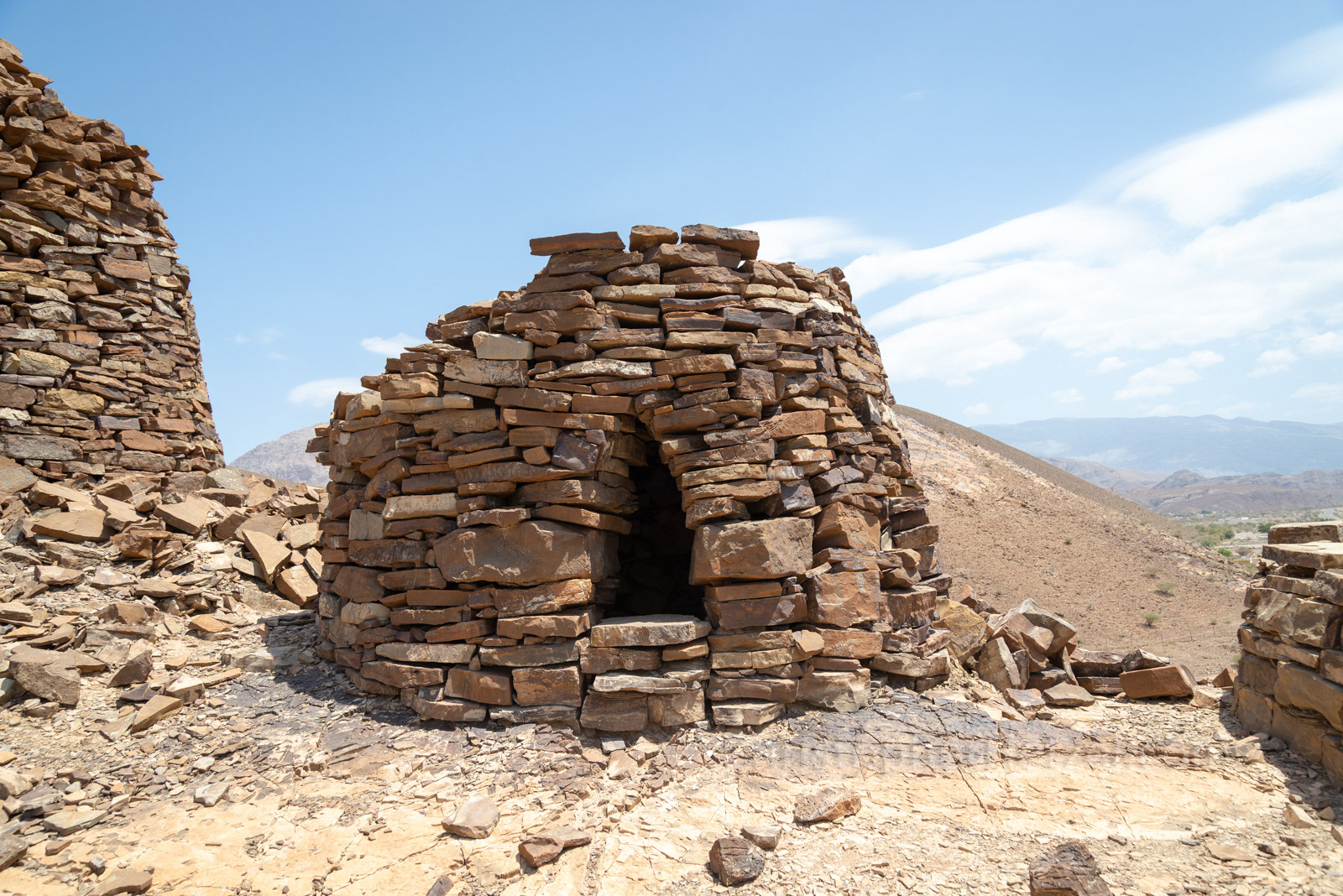
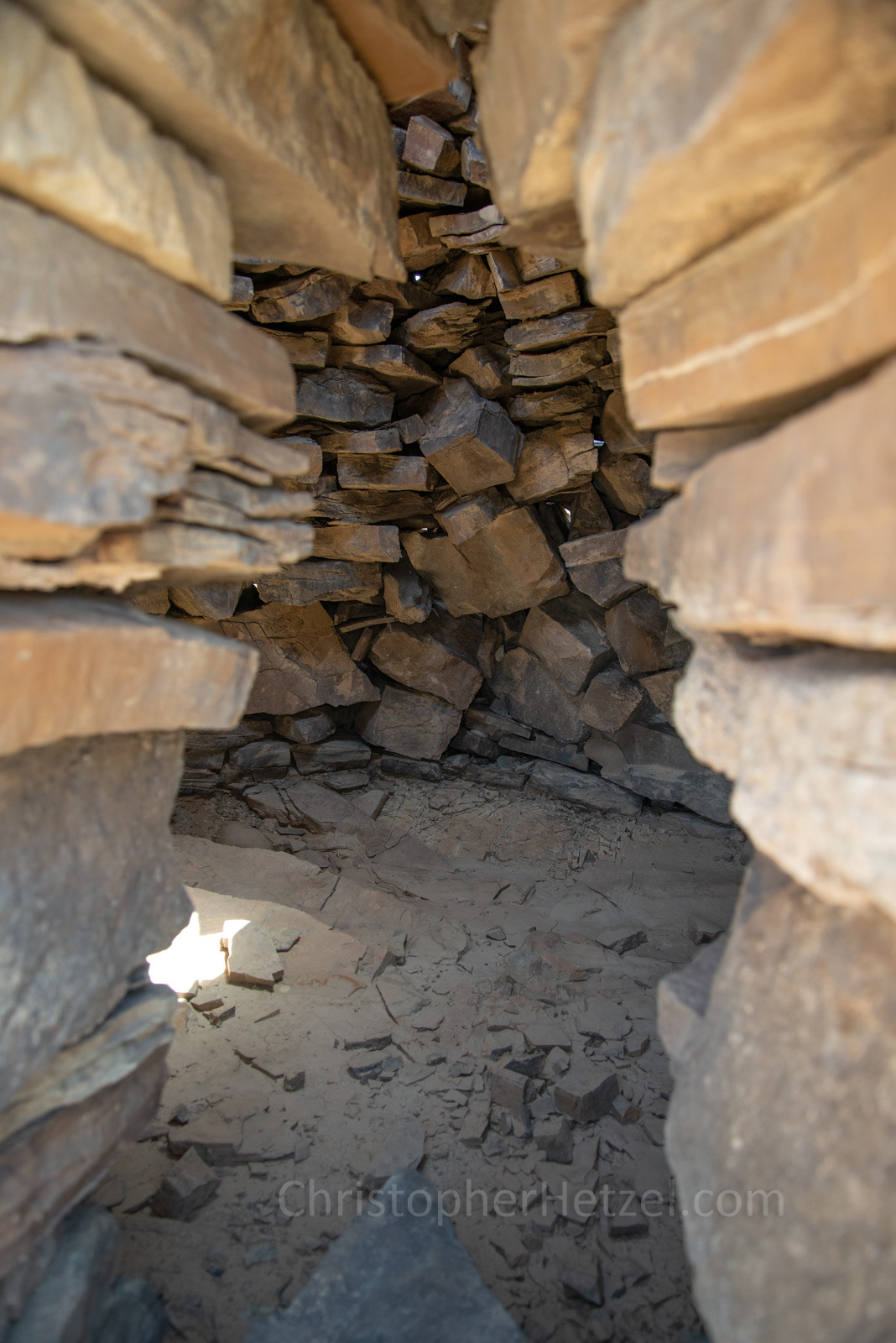
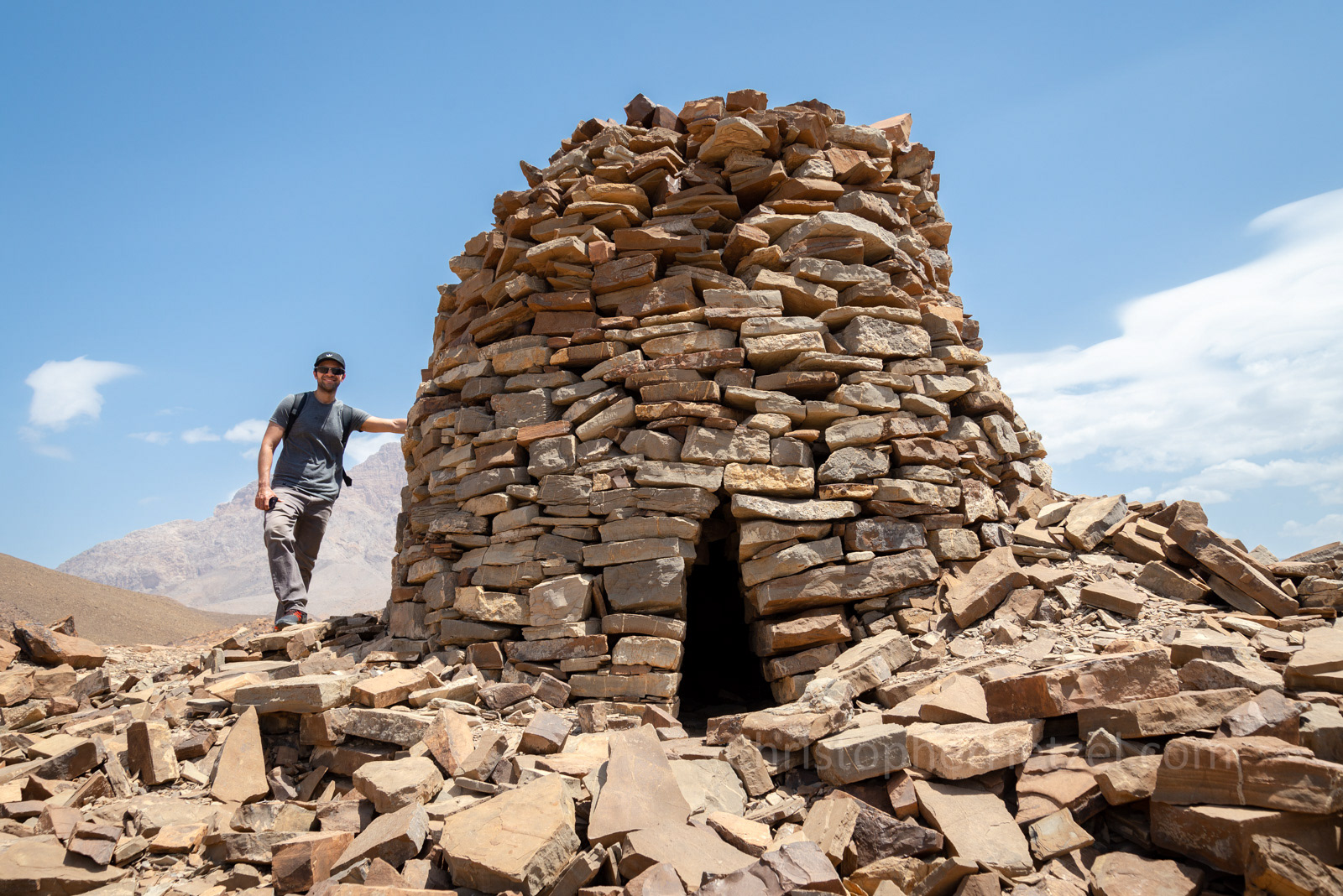
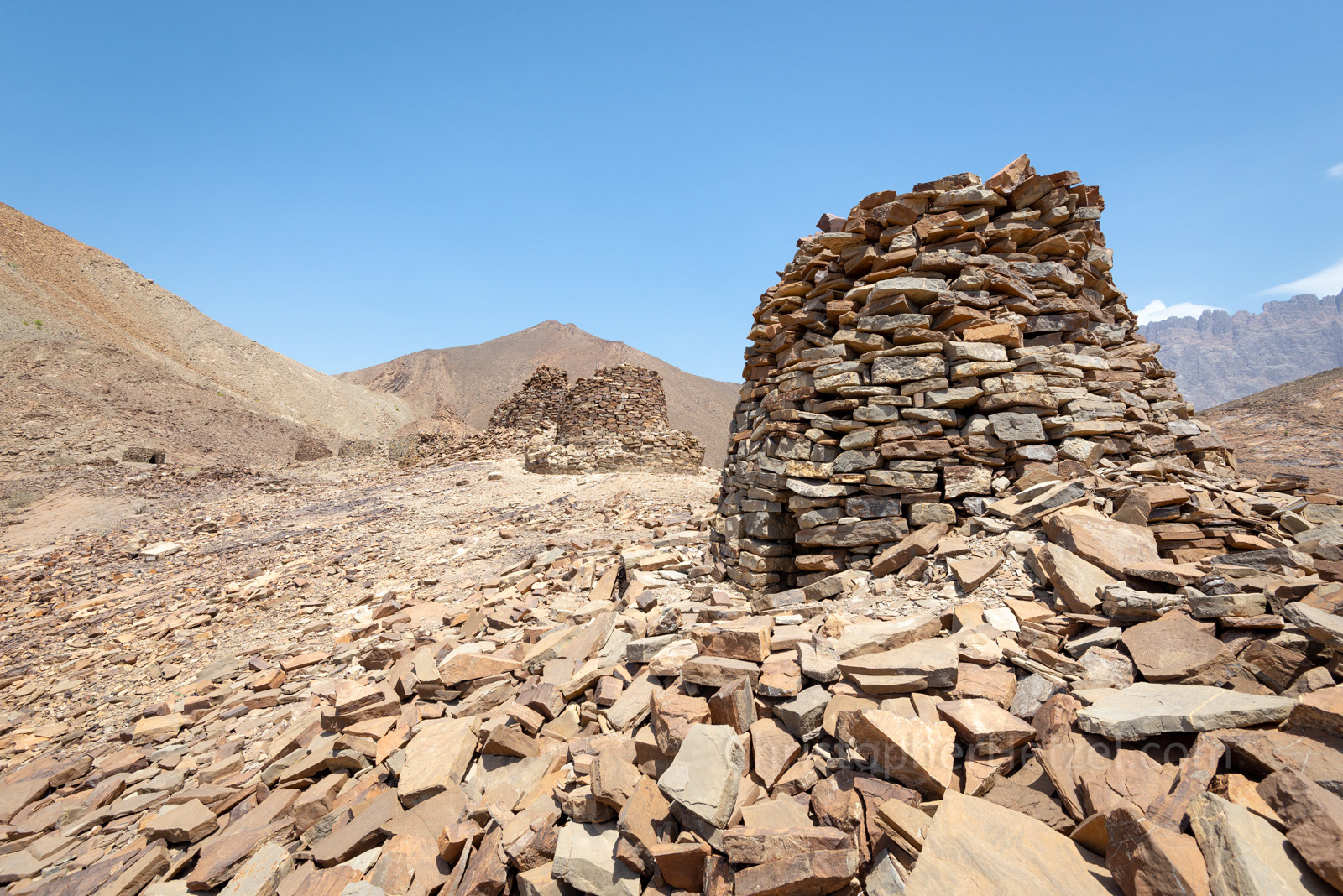
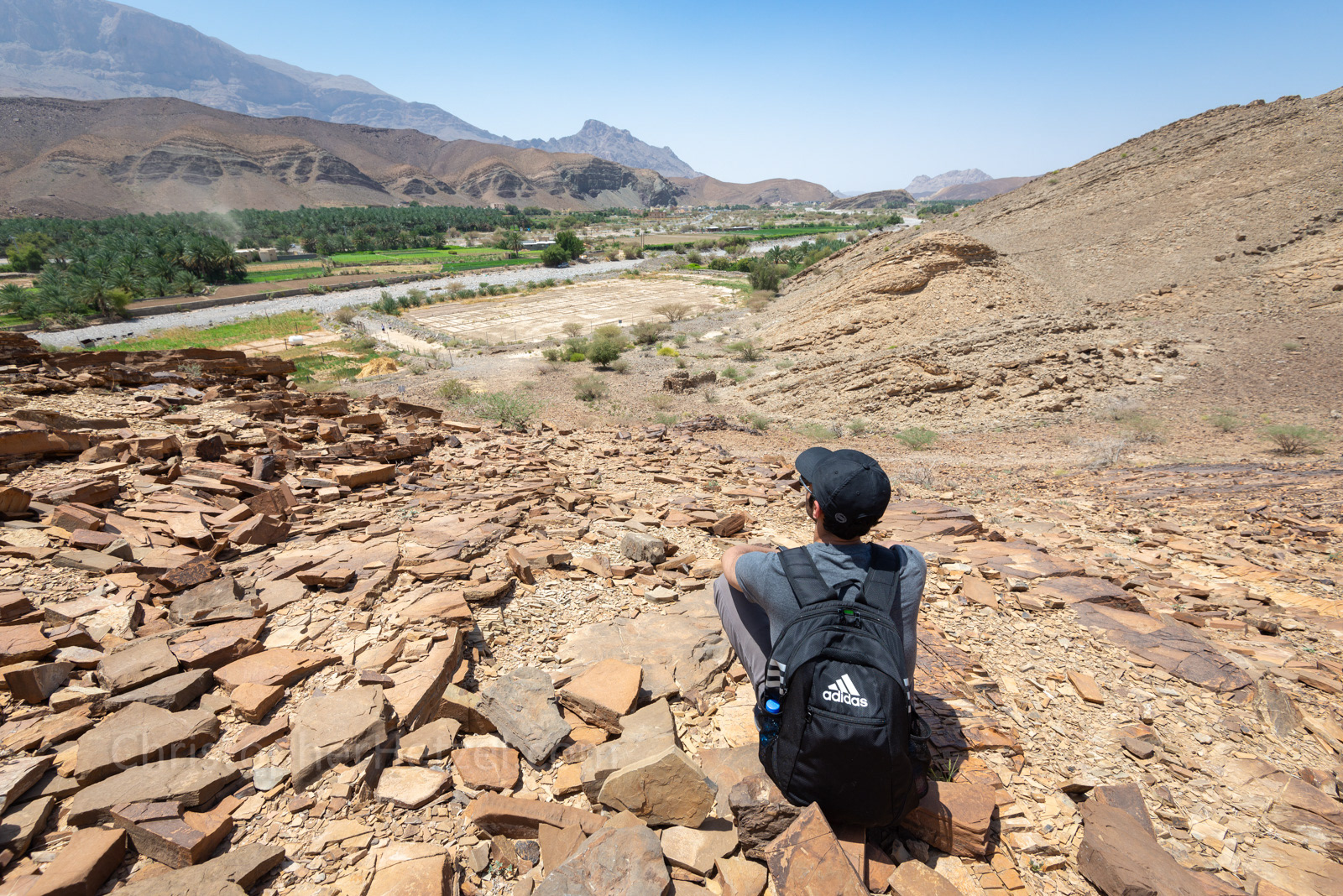
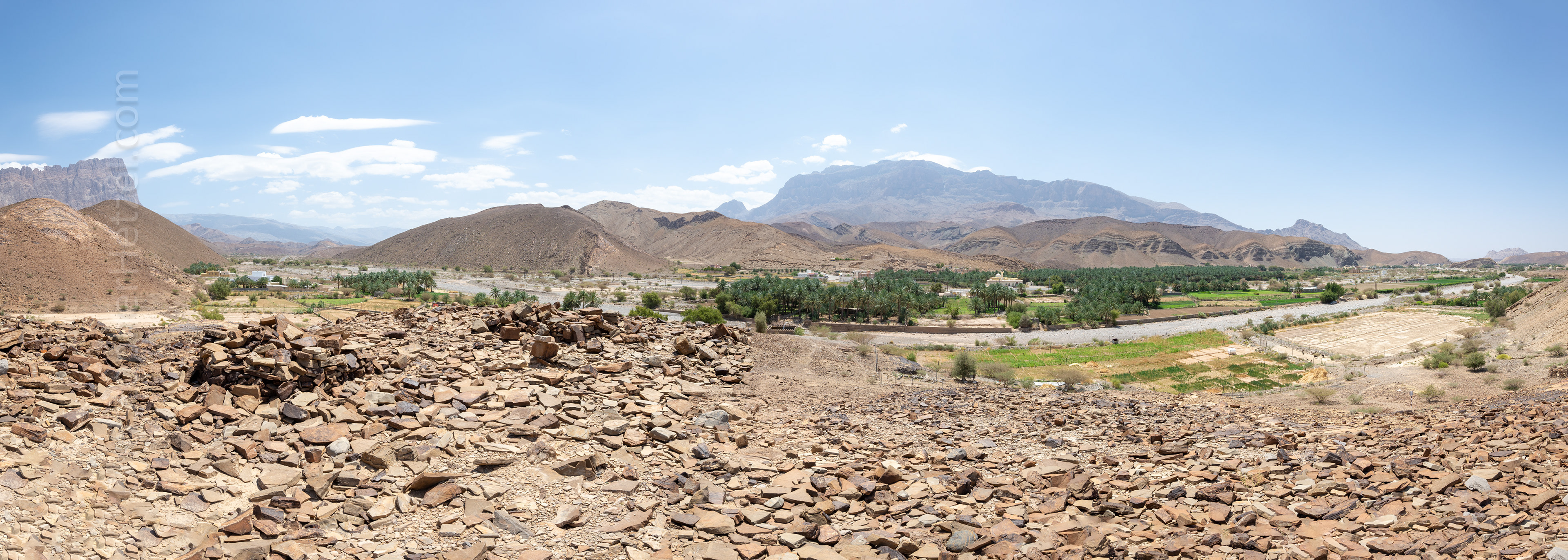
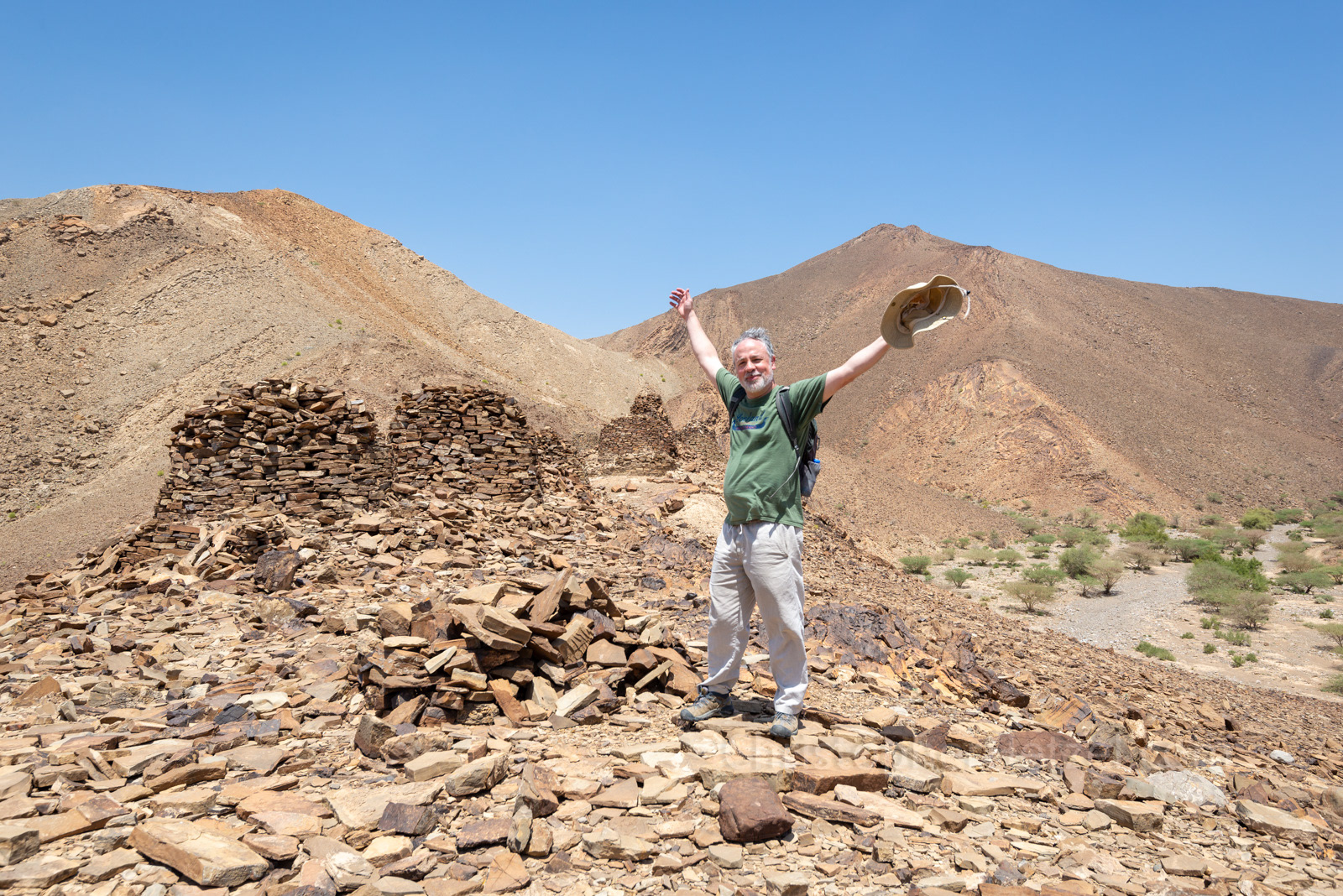
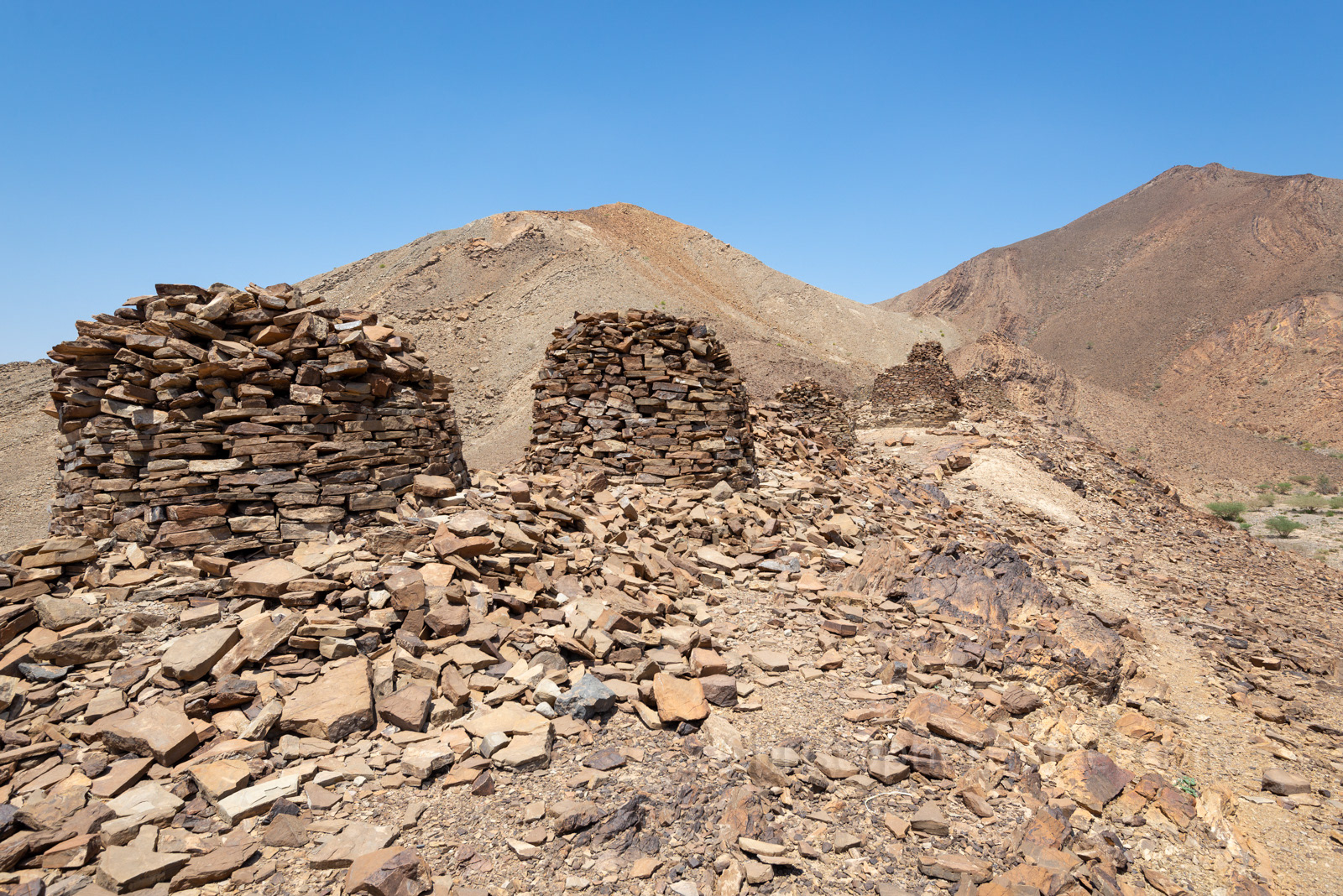
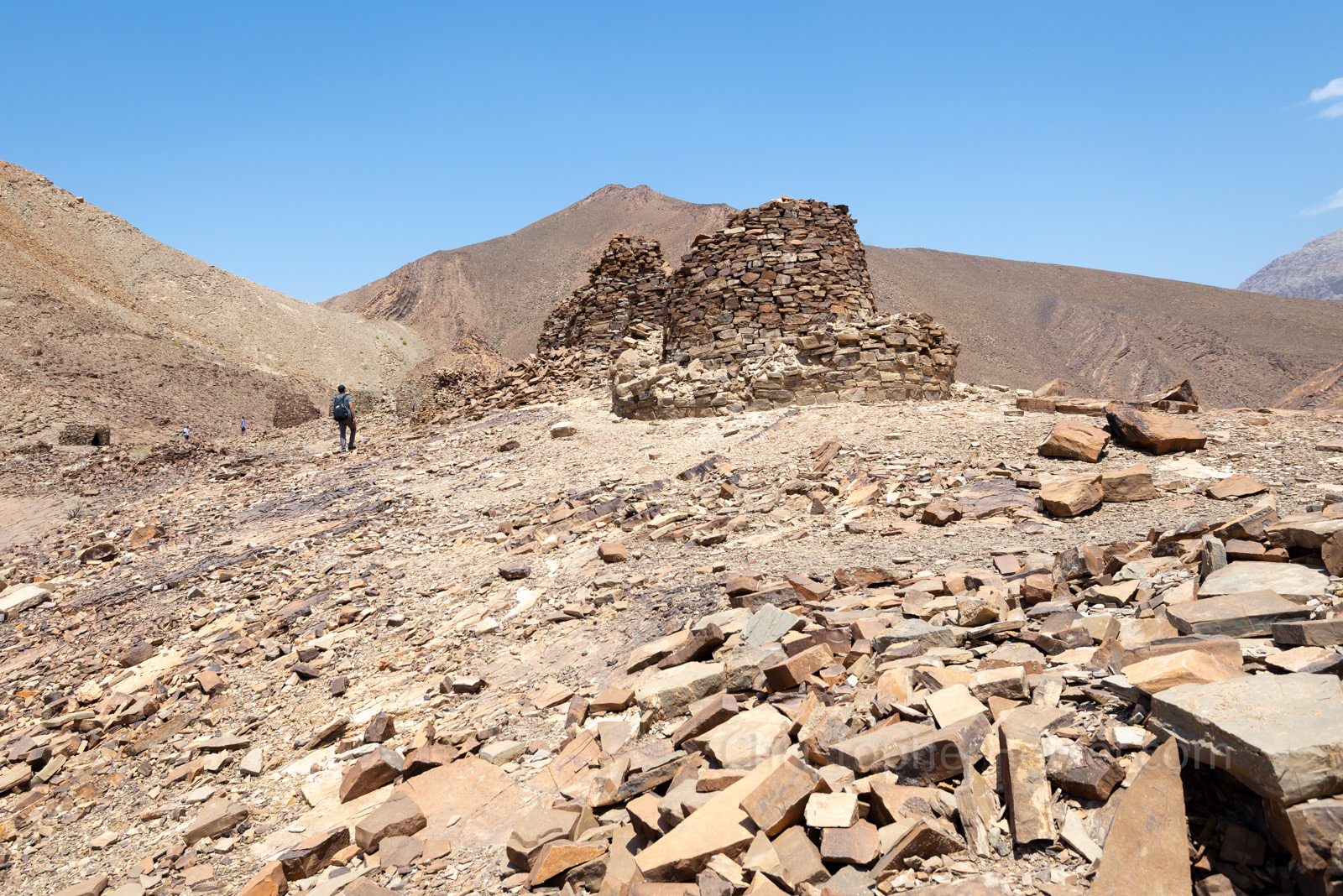
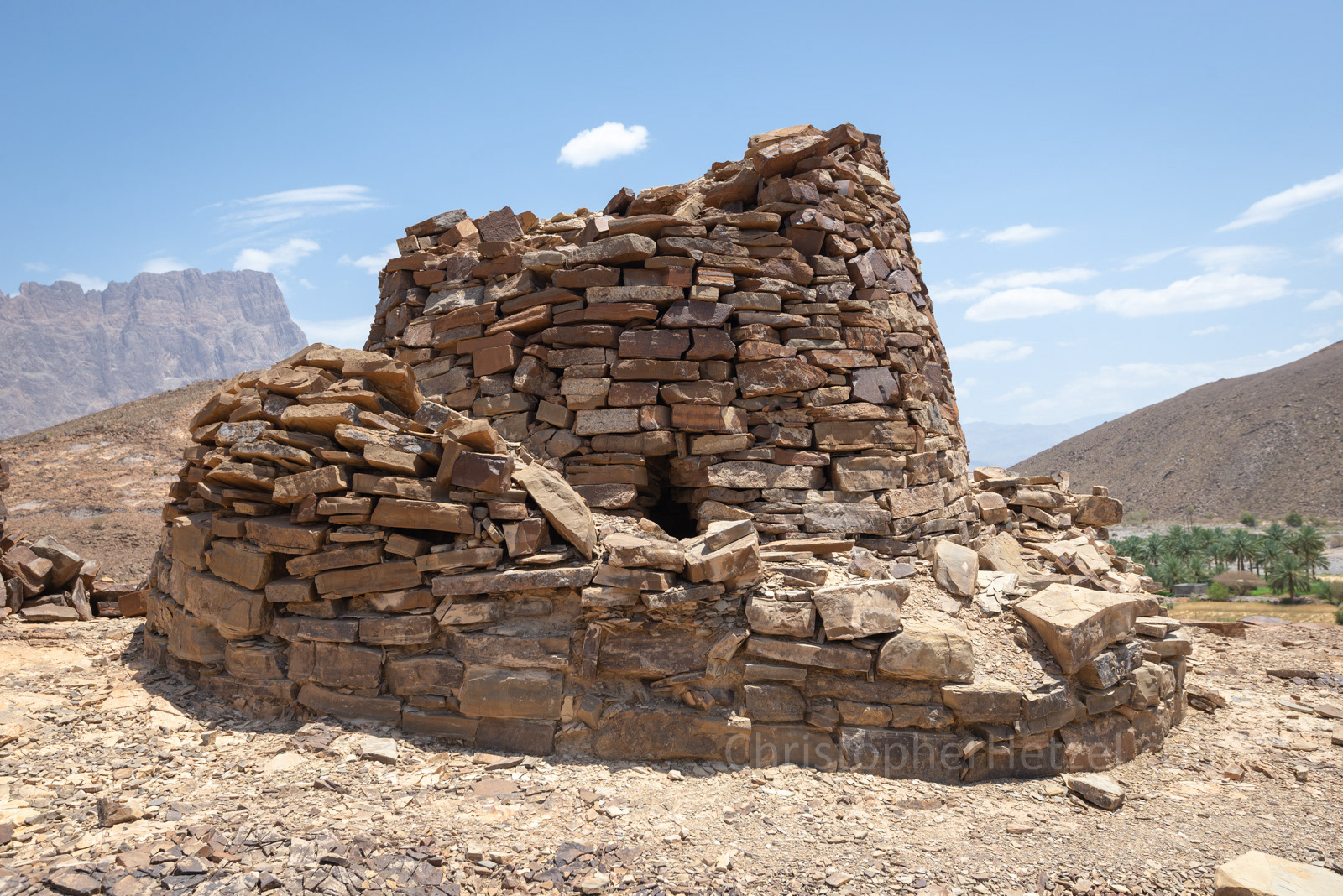
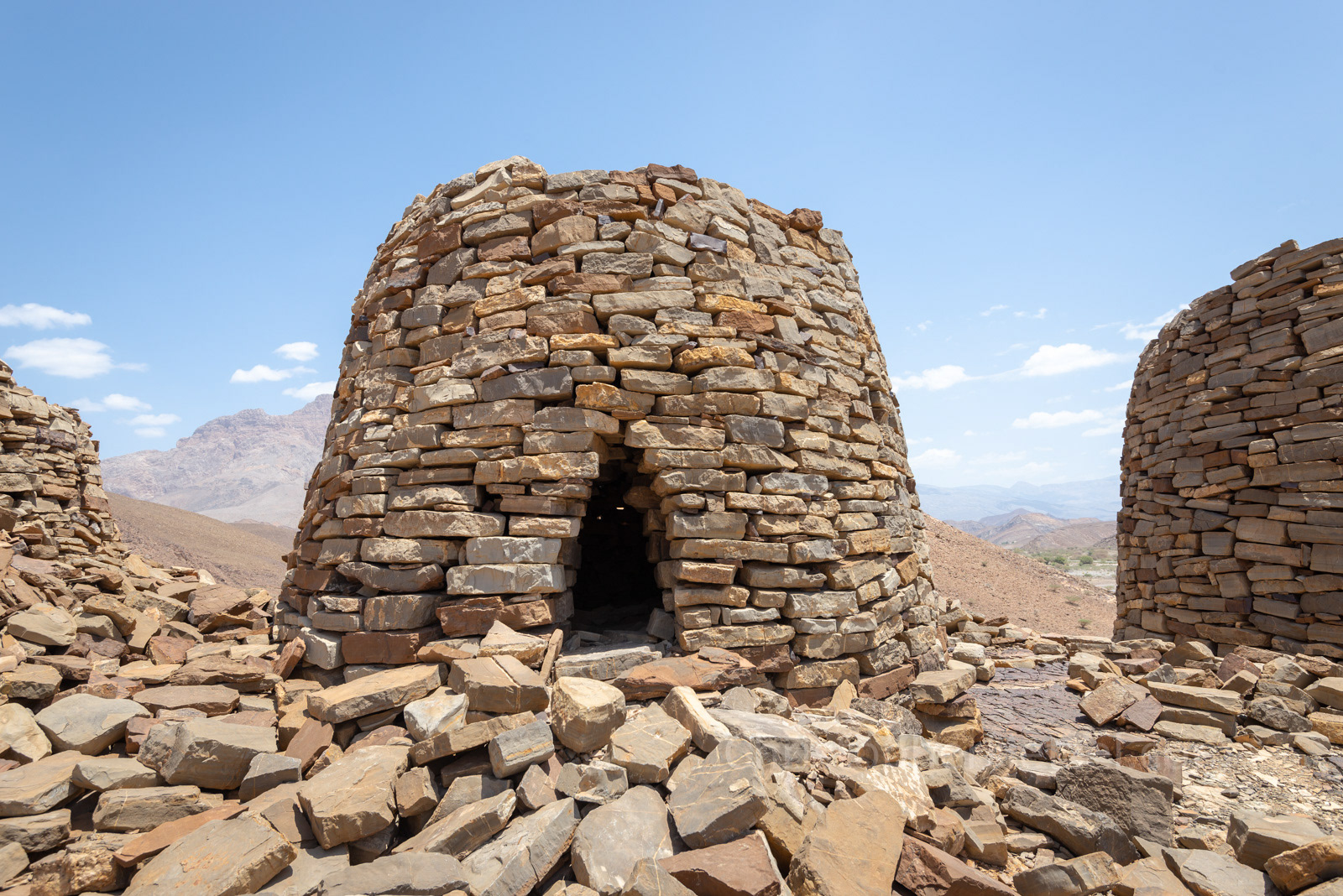
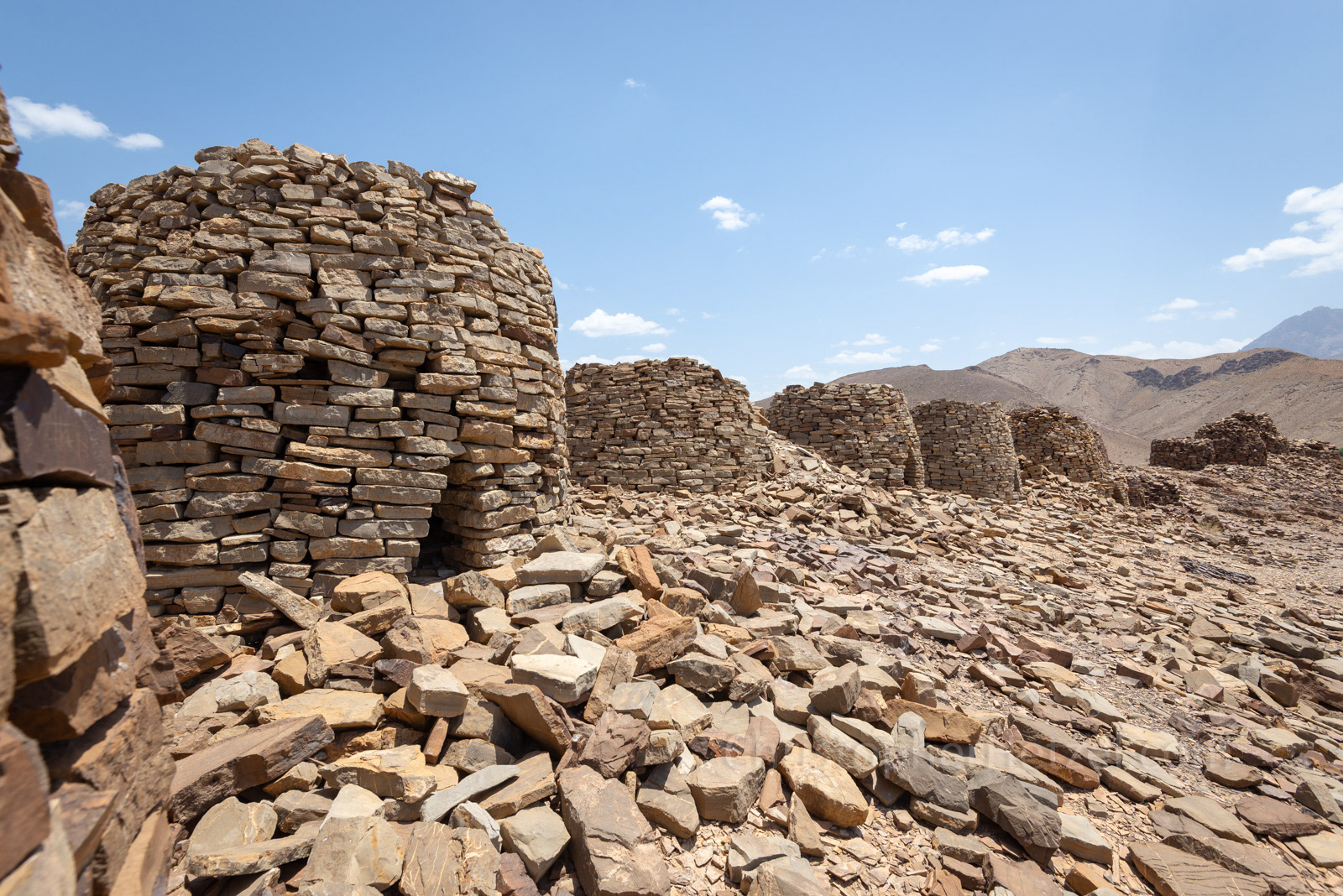
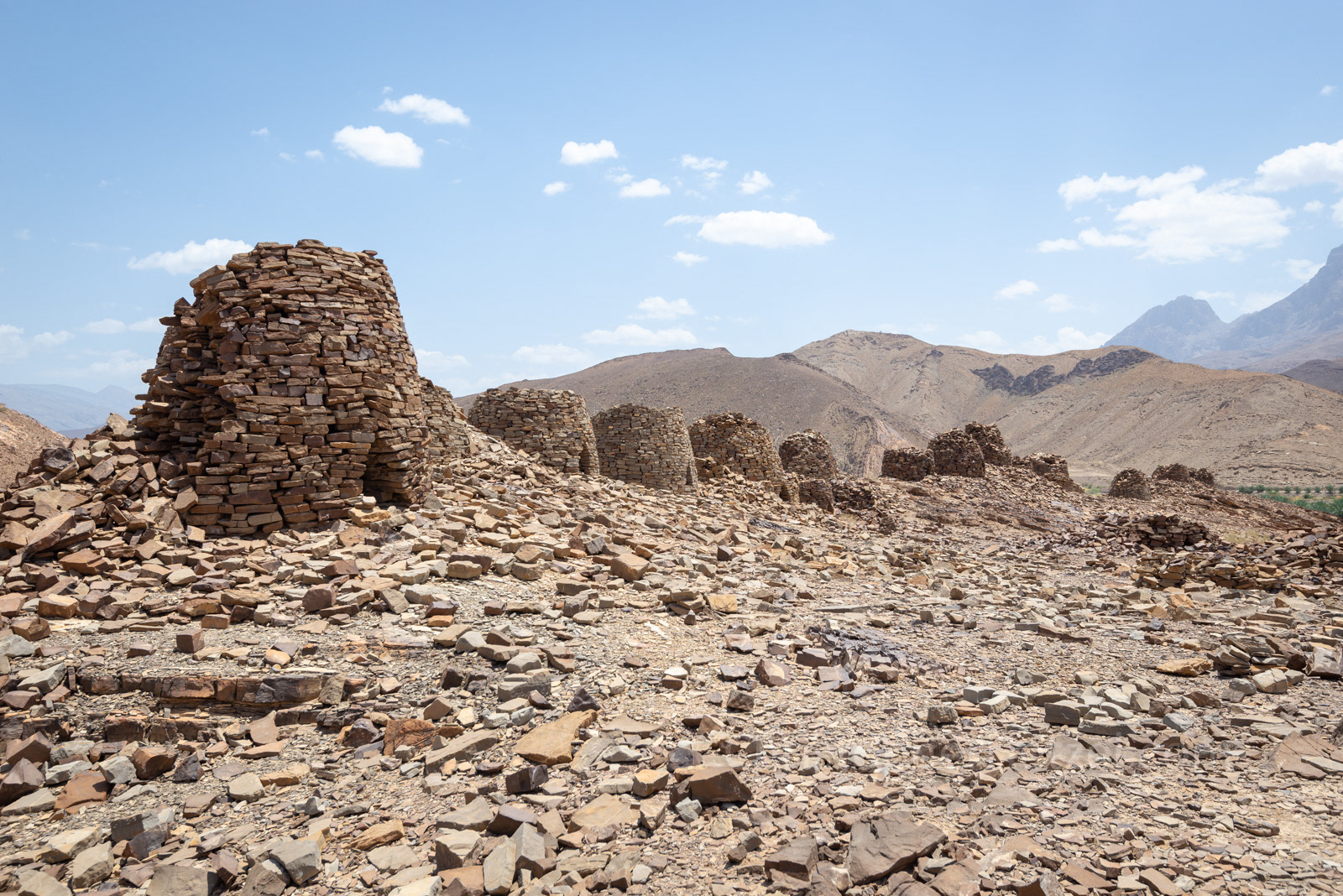
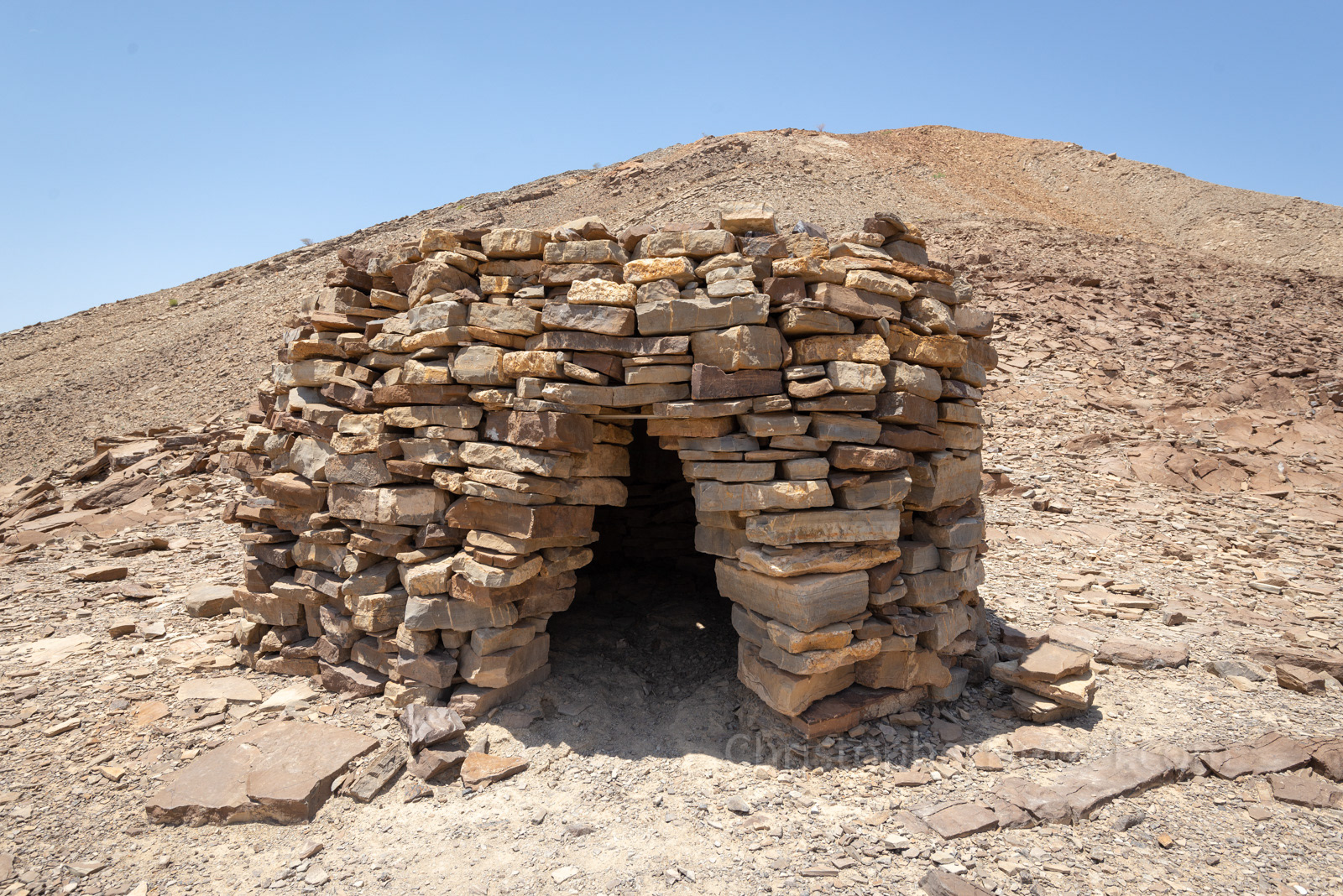
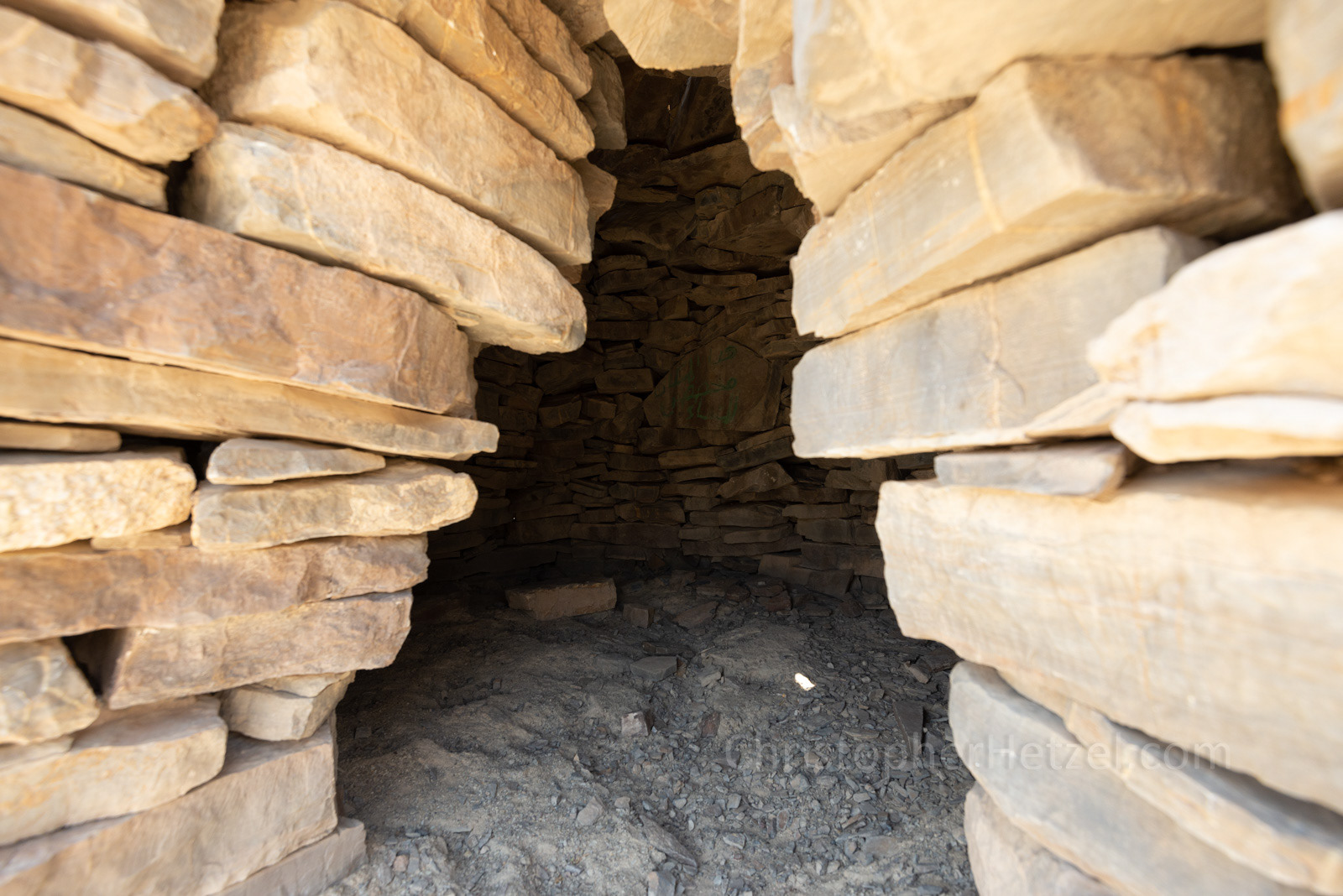
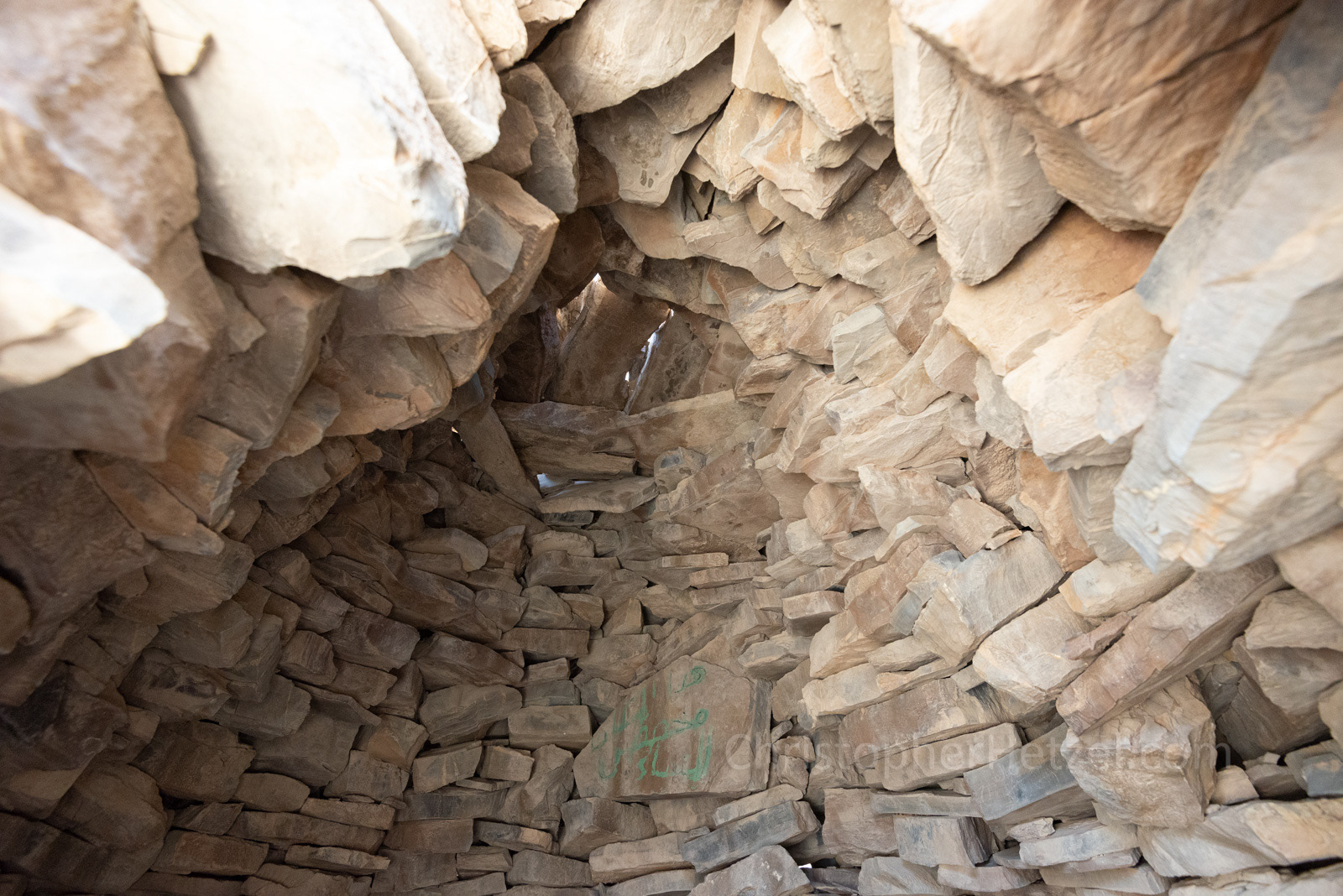
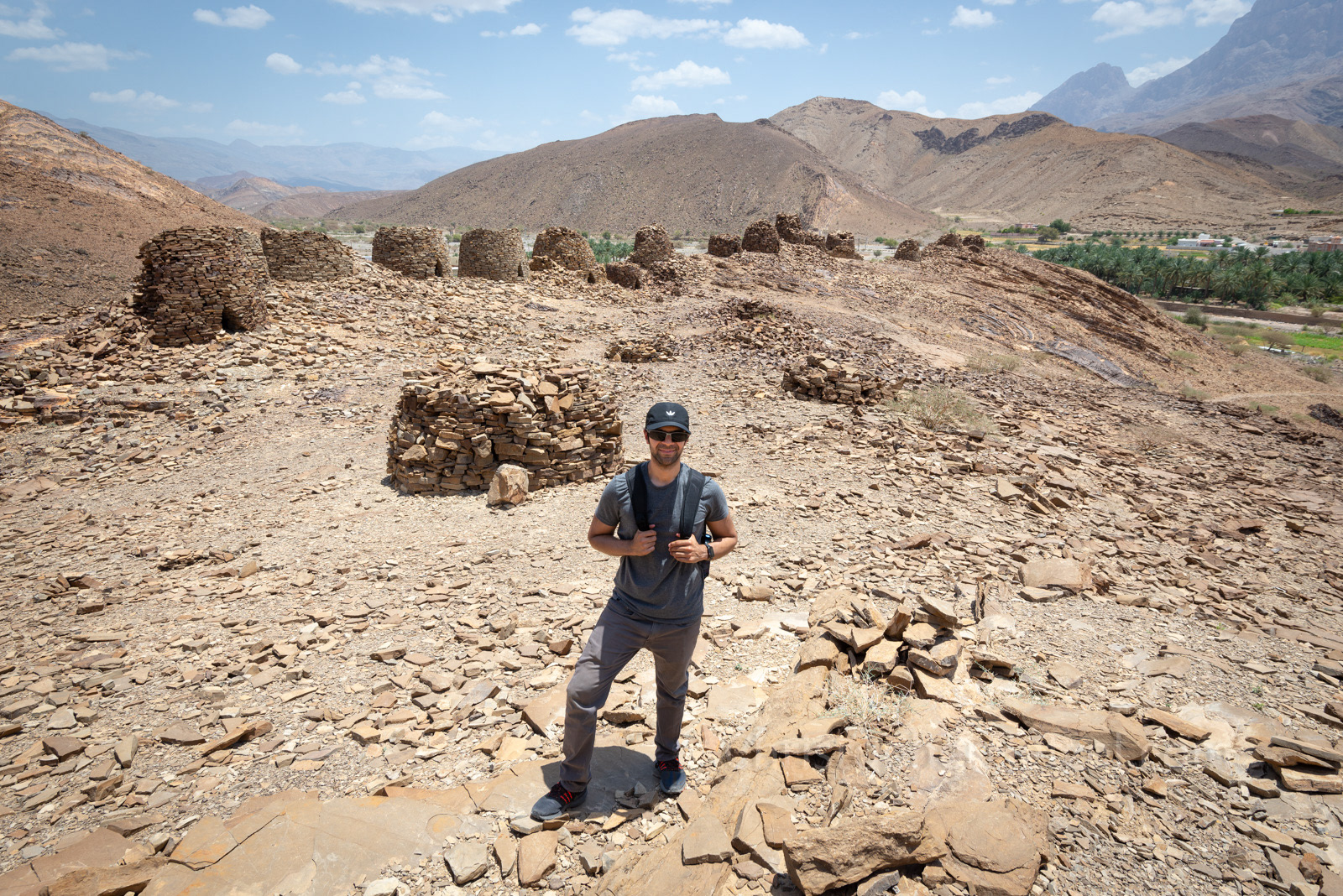
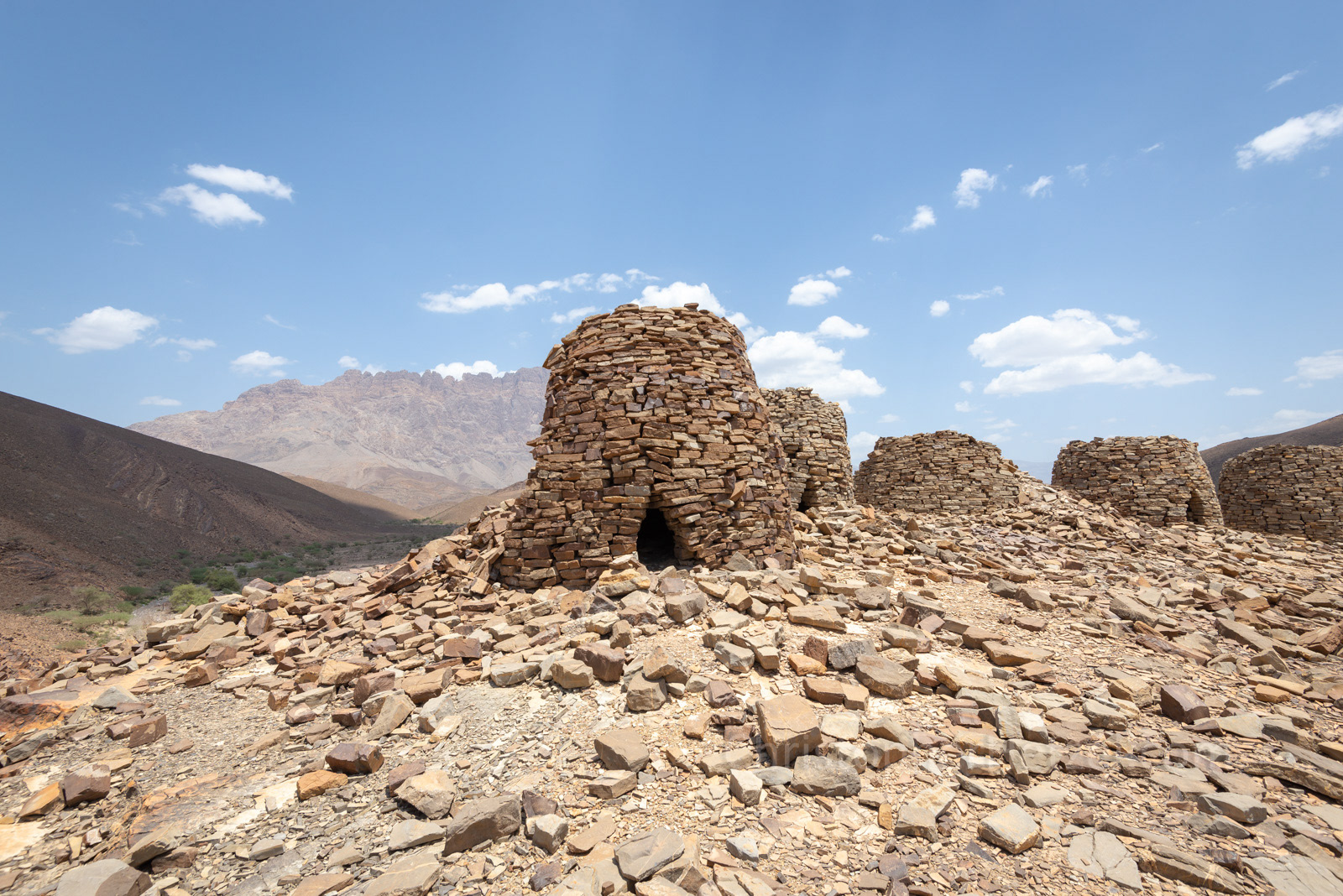
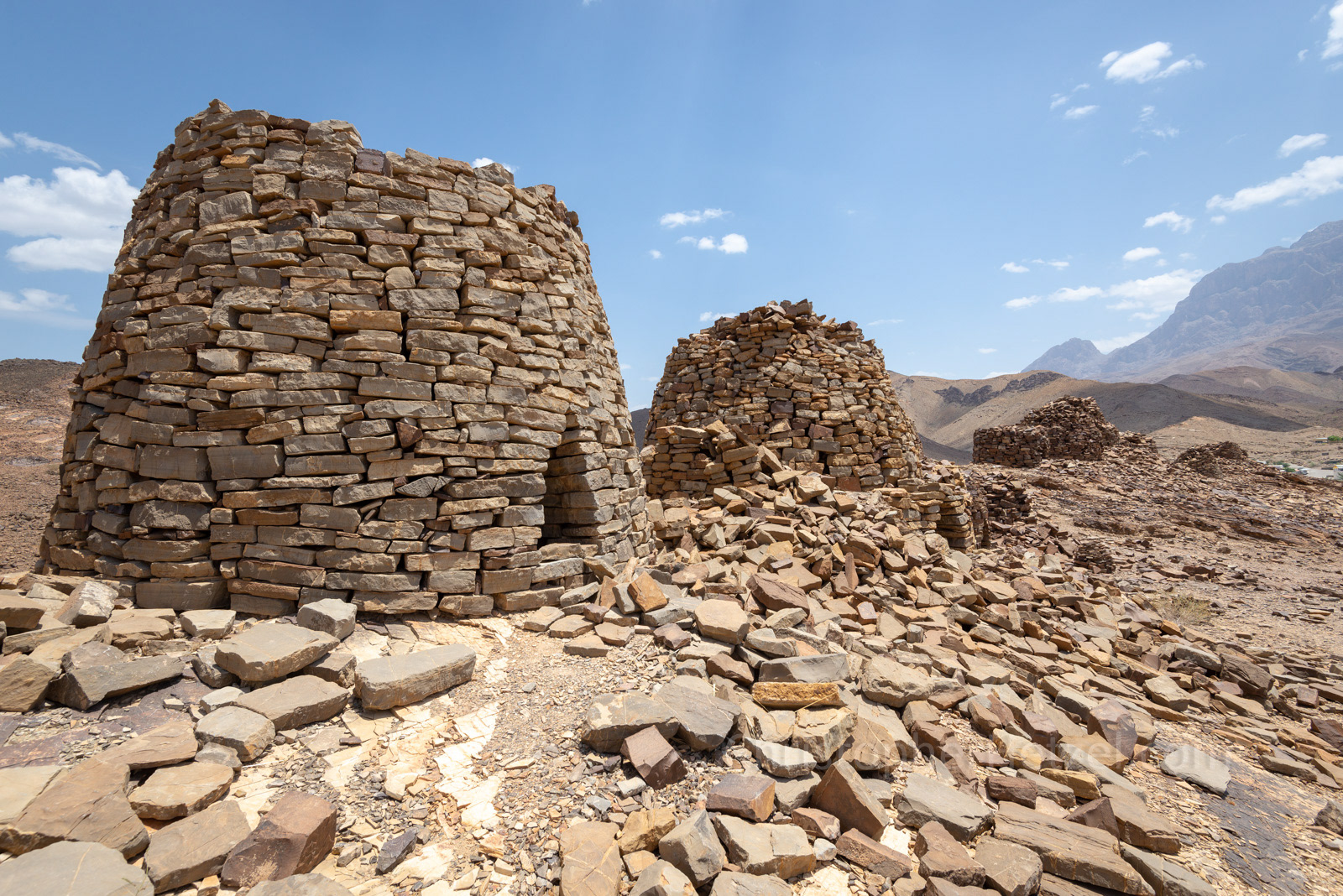
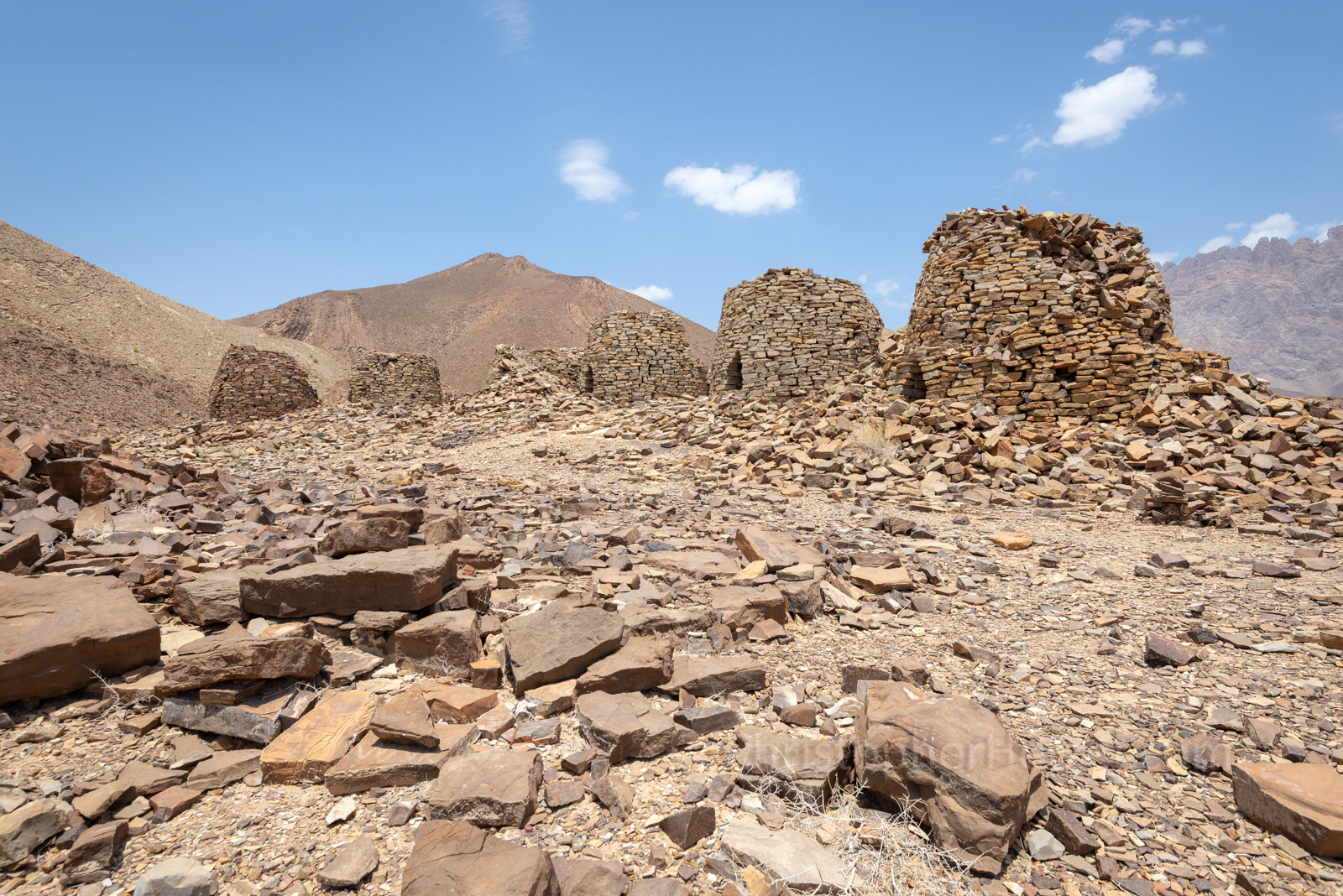
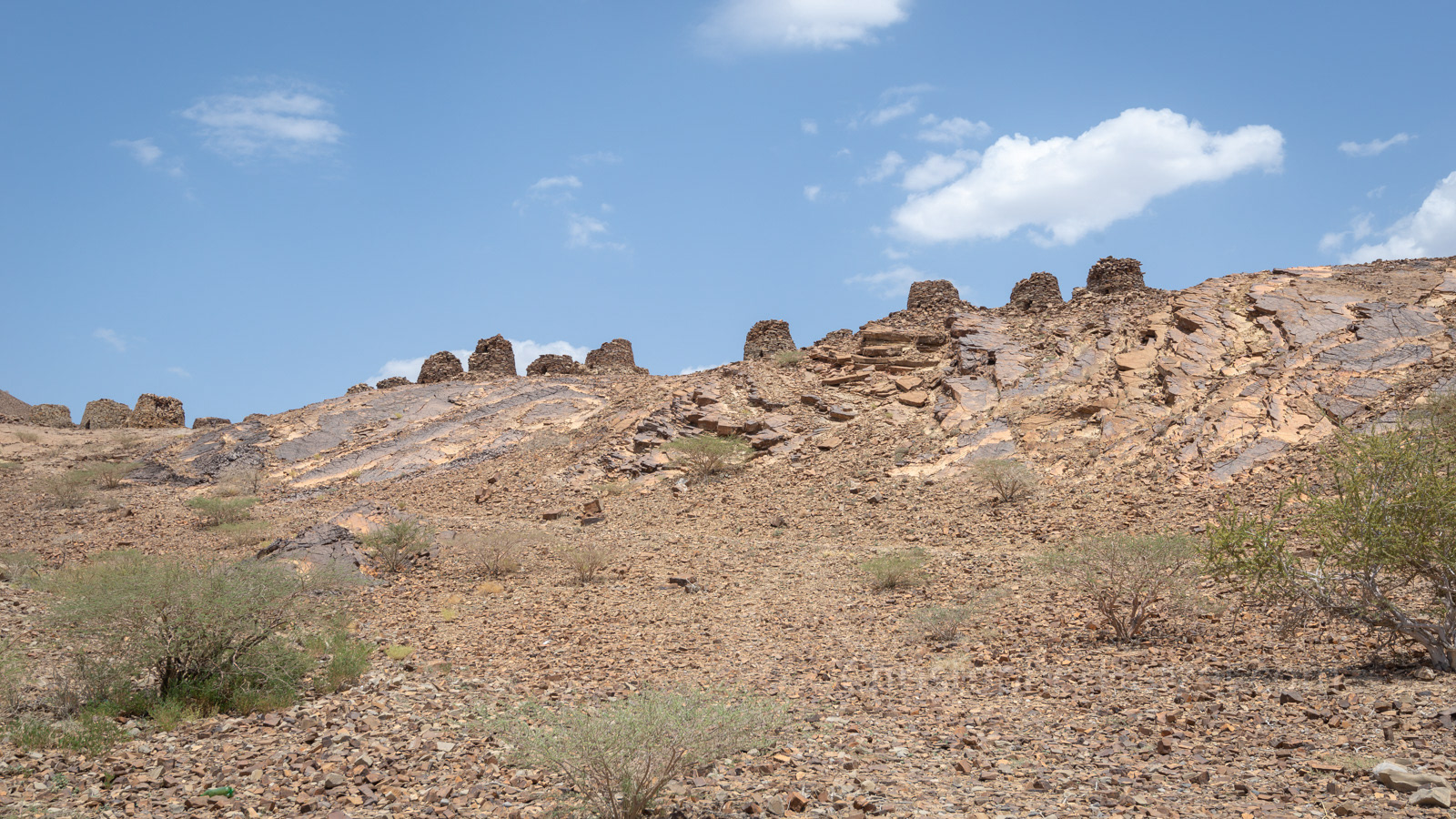
Return to Oman
